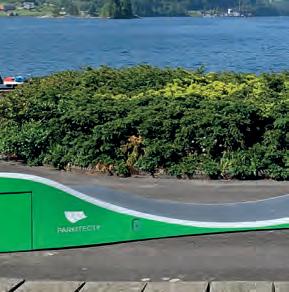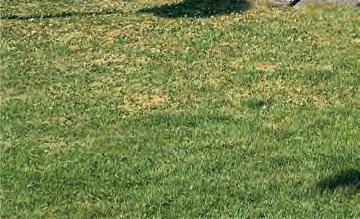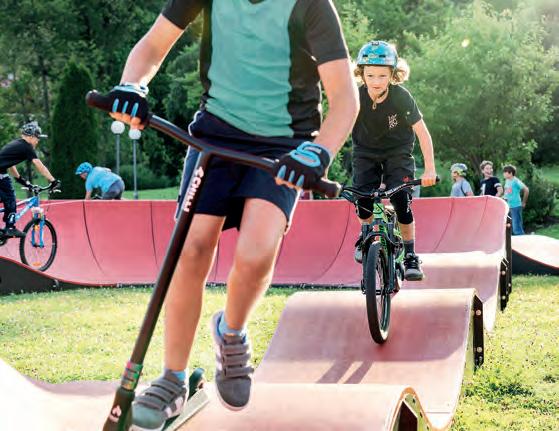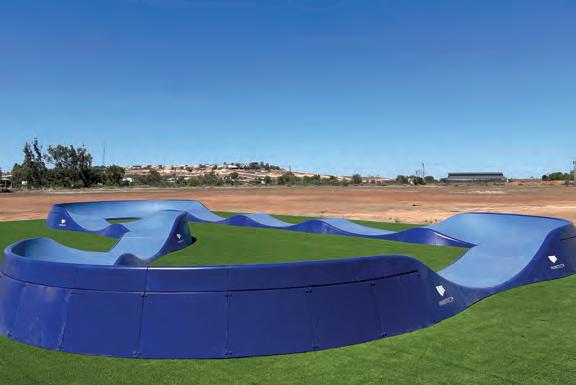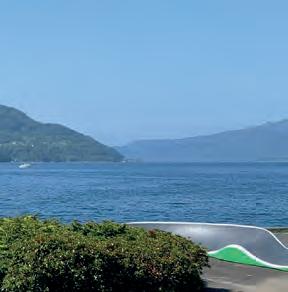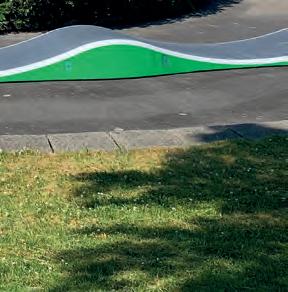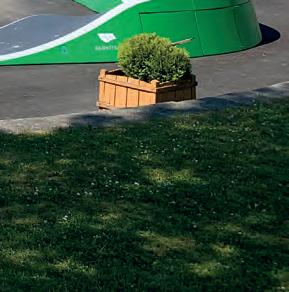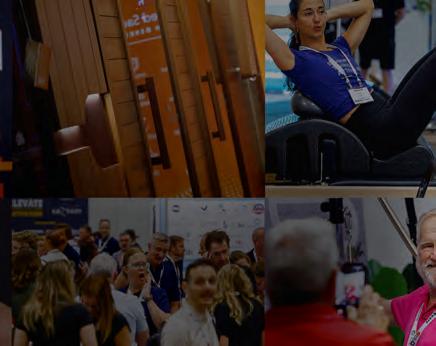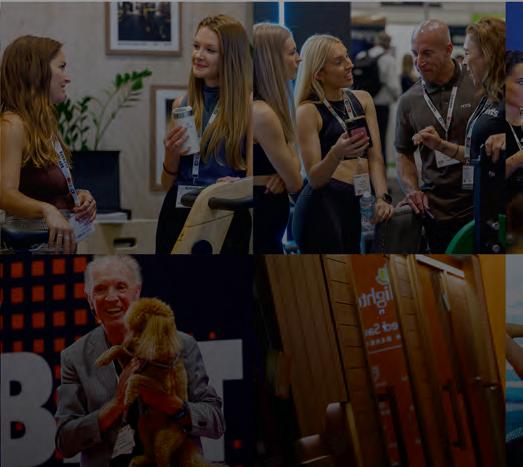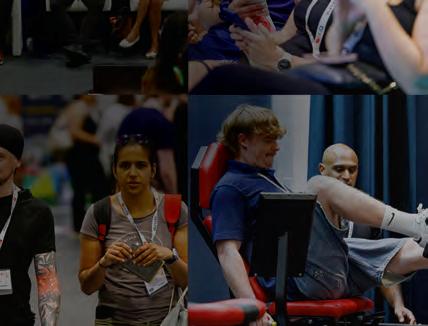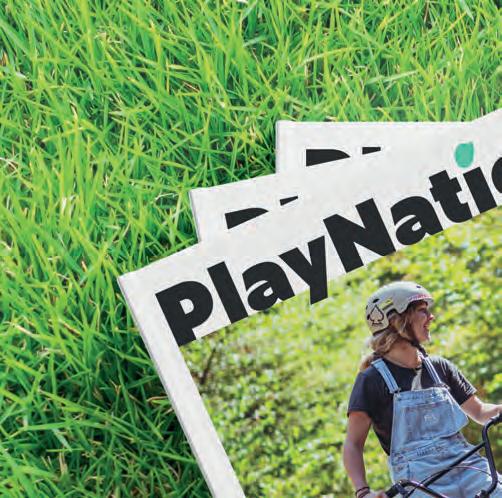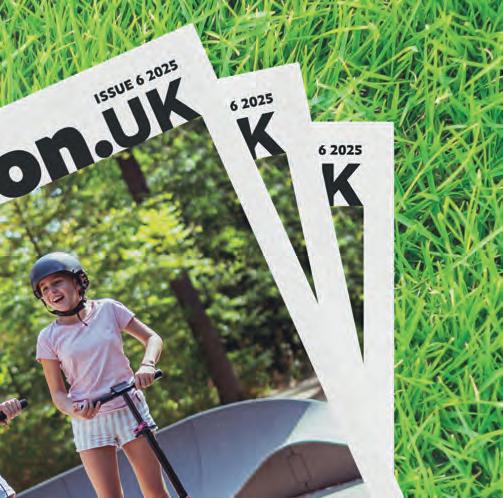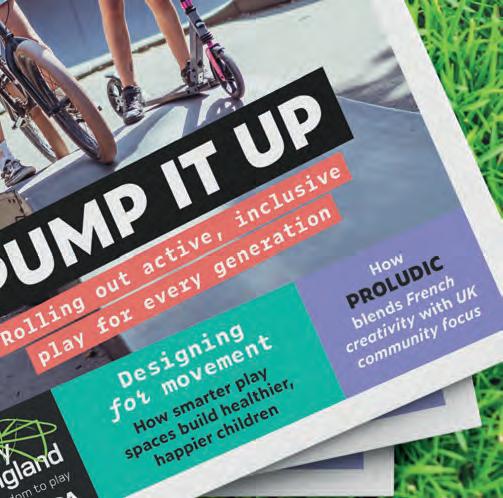PlayNation UK

PUMP IT UP
Rolling out active, inclusive play for every generation
Designing for movement
How smarter play spaces build healthier, happier children
How PROLUDIC blends French creativity with UK community focus


PUMP IT UP
Rolling out active, inclusive play for every generation
How smarter play spaces build healthier, happier children
How PROLUDIC blends French creativity with UK community focus
Play England campaigns for all children and young people to have freedom and space to play throughout childhood.
We work with national partners and other organisations with shared aims to raise awareness about the importance of play. We lobby government to make fundamental policy changes to protect and promote play, and encourage everyone who has an impact

on the lives of children and young people to recognise and plan for children’s play.
Play England has also built up considerable experience and resources to help support individuals and organisations that work in these particular areas:
Government
Local Authorities
Schools
Playwork

We need your support
The new UK government is making positive noises about understanding the importance of play. However, against this positive backdrop, Play England is suffering from a lack of funds to pay for our essential work campaigning for children’s right and freedom to play. Donate today to support our work. www.playengland.org.uk/donate

www.playengland.org.uk
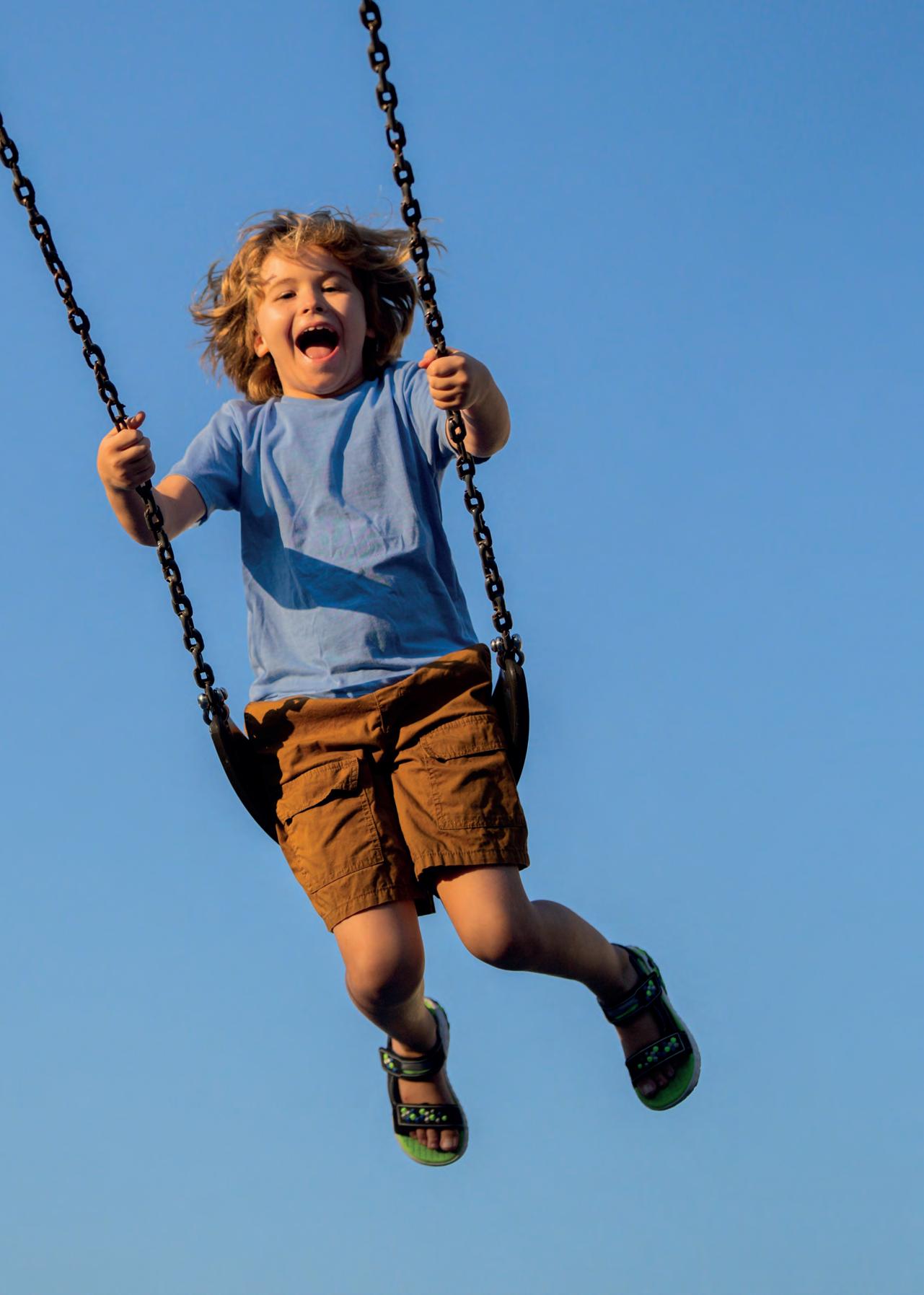










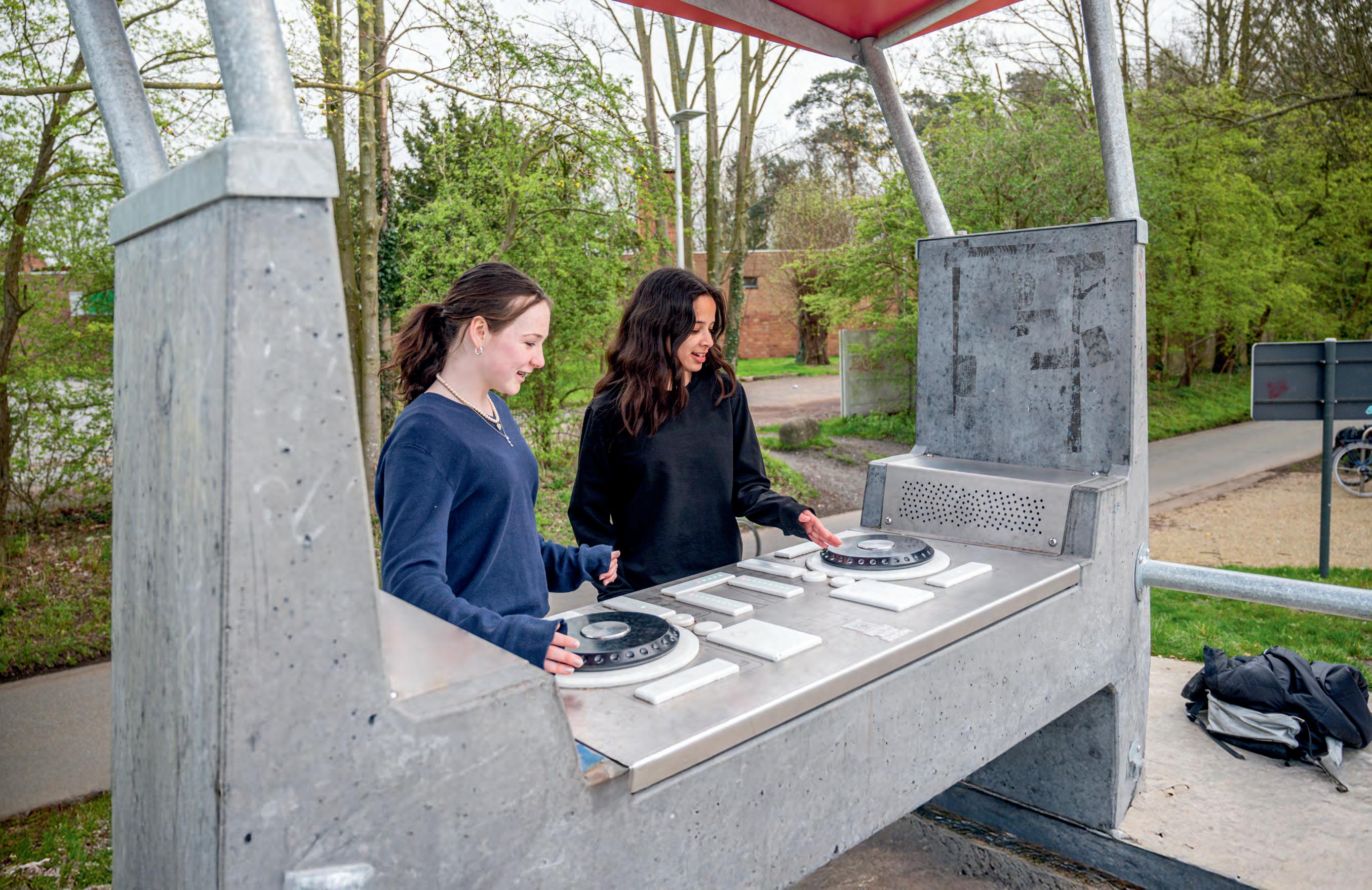



John Challinor
Publisher
PlayNation
john@nationmedia.uk

Rob Baker
Managing Director Proludic @Proludic






Eugene Minogue
Executive Director, Play England
@ EugeneMinogue

Tom Walker
Editor
PlayNation
tom@ nationmedia.uk



Maria Cantarella CEO AIP @AsscIndoorPlay

Jack Shakespeare Director of Strategic Projects, 4Global @JShakespearePA










PlayNation, in partnership with Play England and SAPCA (the Sports And Play Construction Association), is dedicated exclusively to the dynamic and growing sector of play and physical activity for children and young people. Published bi-monthly, the magazine focuses on the policies, people and places that help young people to play and be more active. Subscribe now and we will email you a complimentary copy of the magazine every two months.
http://www.playnation.uk
Advertising opportunities
Contact John E: john@nationmedia.uk http://www.linkedin.com/ company/playnationmag @PlayNationMag FOLLOW US: Subscribe today for
PlayNation is published by SportsNation Ltd in association with Play England (www.playengland.org.uk) and the Sports And Play Construction Association (www.sapca.org.uk) This publication is protected by copyright and no part may be reproduced, transmitted or stored in any print or electronic format without the written permission of the publisher. Every effort has been made to ensure the accuracy of the contents of this publication and PlayNation accepts no responsibility for any error or misrepresentation. Opinions expressed by the contributors and advertisers are not necessarily those of the publisher and we do not accept responsibility of losses or damages arising from them. Printed by Bigwave Marketing Ltd.
The government has revealed plans to invest £5bn in revitalising parks, public spaces and high streets in 339 “overlooked” communities across the UK. The new Pride in Place programme will see 169 areas get £2m every year for a decade, while a further 95 places will get a one-off payment of £1.5m. The money includes spending announced earlier this year, which saw £1.5bn pledged to 75 of the “most deprived” areas in the UK.
In each case, the way the money will be invested can be decided by the communities themselves.
“Local people will decide how funding is spent – reviving high streets, restoring parks and breathing new life into leisure centres,” the government said in a statement announcing the funding.
“This is renewal in action, led by the people who know their neighbourhoods best.”
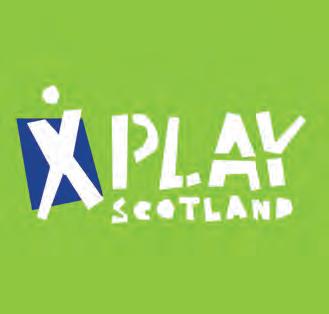
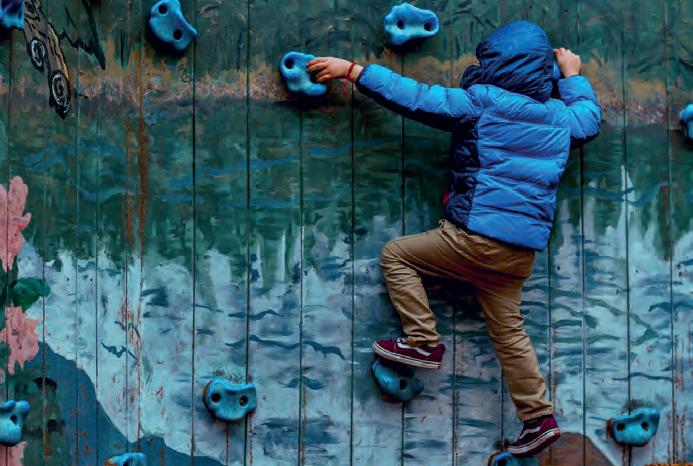
The announcement is part of the government’s Plan for Change, a 10-year mission to “back the people who make their communities thrive”.
Announcing the funding, Prime Minister Keir Starmer said: “This is a huge investment, but what
matters most is who decides how it’s spent: the neighbours, volunteers and parents who know their communities best – the people with real skin in the game.”
The funding has been welcomed Play England.
Play Scotland is seeking to grow its Board by adding passionate new volunteers who can bring diverse skills and experience to the organisation. The Board of Trustees is responsible for the overall governance and strategic direction of Play Scotland, supporting its aims, objectives and goals.
“We welcome applications from people of all backgrounds, and we particularly encourage applications from people currently underrepresented on charity boards,” Play Scotland said in a statement. To apply, send a letter of interest and CV by 21 November, to maryramsay@playscotland.org
The 23rd National Playwork Conference will take place in Eastbourne from 3 to 4 March 2026.
Described as the UK’s largest gathering of play professionals, the event features a comprehensive educational programme.
The 2026 edition will feature nine “tracks”, with each featuring a number of sessions. The tracks are:
l Play
l Playwork: Back to Basics
l Play in the Digital World
l Children’s Rights
l Inclusivity and Equity
l Anarchy
l Playwork Advanced Thinking
l Play in the Urban Environment
l Play for Itself
Meynell Walter, the driving force behind the National Playwork Conference, said: “The event is a chance for the sector to come together, to share our knowledge and our thinking, to learn from
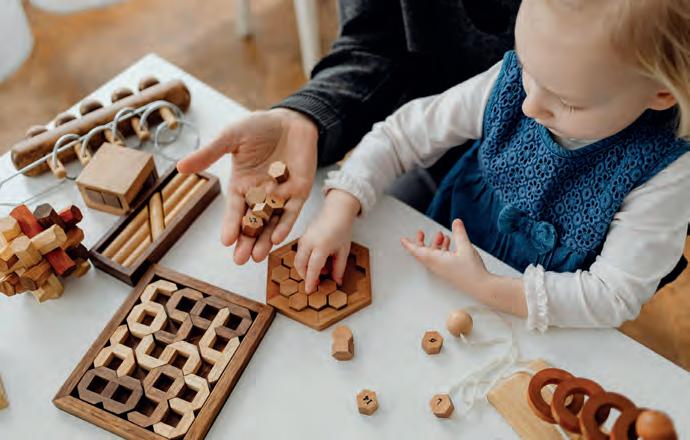
each other and develop our understandings around what we do – and to be reminded of the vast and wonderful community we are a part of.
“This year’s tracks include ‘Play’, which will look at the more complex aspects of play –
including anthropology, psychology, sociology and philosophy – and another on children’s rights, which is a bigger conversation than just the right to play.”
The conference will also include the Annual Playwork Awards ceremony, on 3 March.
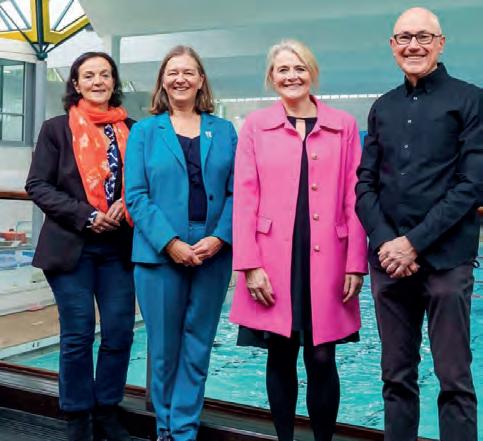
Wandsworth Borough Council will open a new soft play area at Putney Leisure Centre. Designed for children under five, the area will be fitted with age-appropriate Soft Play equipment, including sensory stations and imaginative play corners. As well as leisure centre members, the soft play area will be free to use for Access for All members. Access for All is a concession scheme ran by the council, which offers eligible residents 50% to 100% discounts on key leisure services.
The new play area will also support the council’s ambitious Year of Play, a strategy seeking to make Wandsworth the best place for children to grow, explore and enjoy the freedom of play. Under the Year of Play, the council will invest £15 million over the next three years to improve playgrounds and play spaces.
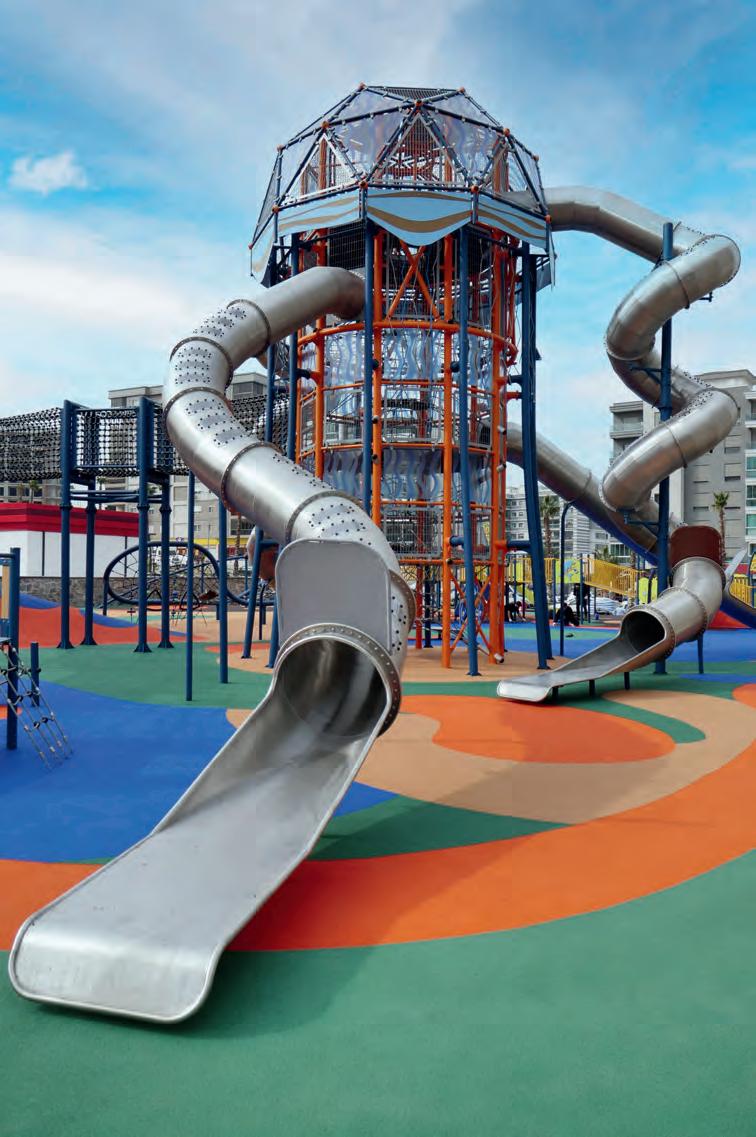
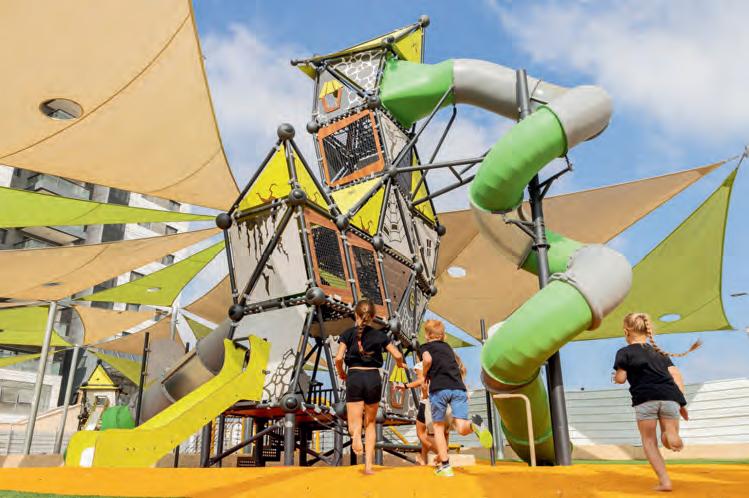


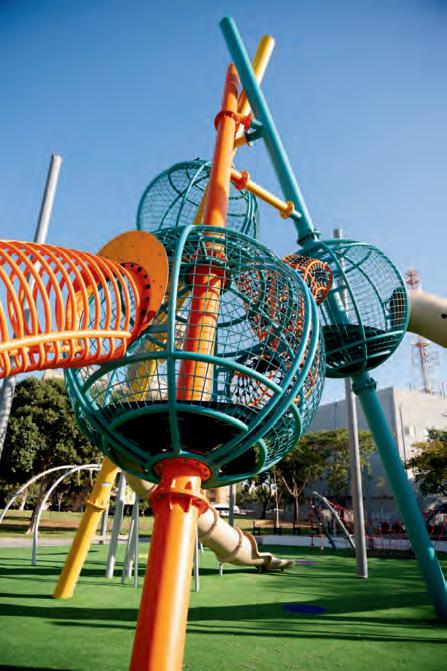
In collaboration with Cemer, Wicksteed offers one of the most extensiveplay equipmentportfolios in the UK, from imaginative, largescale statement pieces to timelesscommunity favourites.



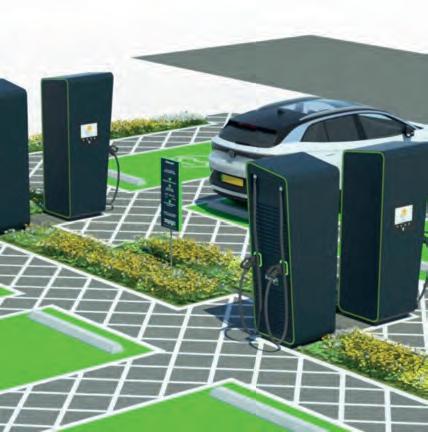






More than £2.5m will be invested to modernise and refurbish 16 children’s playgrounds across Neath Port Talbot in Wales. The investment, from Neath Port Talbot Council, will be used on facilities which have been identified as being in poor condition.
The council’s Neighbourhood Services Team, along with Play Sufficiency colleagues, commissioned an independent condition survey of all Neath Port Talbot playgrounds in April 2025. Playgrounds were assessed based on their safety conditions, with 16 sites identified as requiring urgent attention and in need of refurbishment. Some sites could even face closure without required refurbishment work. The council is subject to statutory obligations under the Play Sufficiency Assessment (PSA), a legal requirement in Wales under the Children and Families (Wales) Measure 2010.
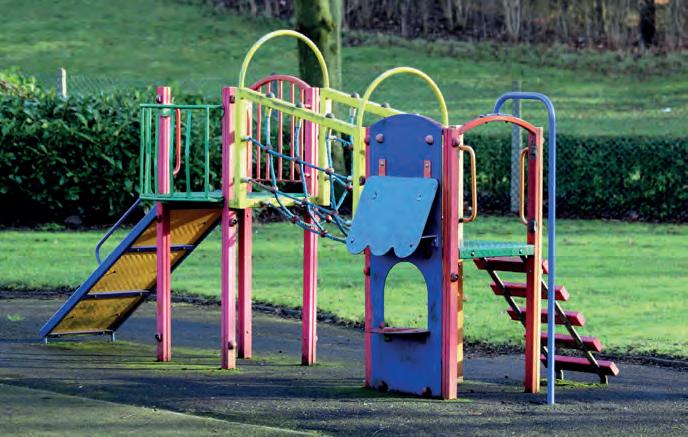
Playgrounds to be refurbished were assessed based on their safety conditions
The authority’s Neighbourhood Services Section currently oversees the management of 48 playgrounds across the borough, supported by a dedicated and experienced team. Councillor Scott Jones, the council’s Cabinet Member for Streetscene, said: “The aim is to replace
outdated playgrounds with modern, purpose-built spaces tailored to the needs of each community.
“Playgrounds are recognised as essential community resources promoting physical activity, social development and emotional wellbeing.
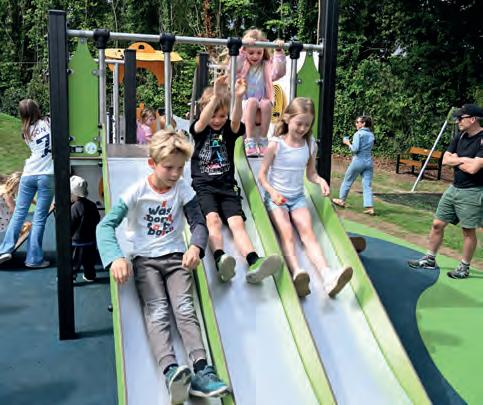
Children in Goring-on-Thames now have a magical new place to play, with the opening of the Enchanted Bourdillon Field Play Area – an inclusive, communityinspired playground designed for children of all abilities. Developed by specialist play designers and installers Proludic, in partnership with Goring-onThames Parish Council, the project was shaped by local consultation following a 2019 review that identified the need for improved and more accessible play spaces.
At the heart of the new playground is the Bourdillon Belle – a bespoke, boat-themed play unit featuring a triple slide and an inclusive dual slide to encourage shared play. The design also includes a custom multiplay structure incorporating artwork by local children, brought to life through Proludic’s unique Grafic Games technique.
It’s an exciting opportunity to make a tangible difference in the lives of children and help ensure that play is valued and integrated into their everyday experiences
Mary Ramsay CEO, Play Scotland
As I step into the role of Chief Executive at Play Scotland, I’m excited to lead the organisation in this new chapter.
With the publication of Scotland’s Play Vision Statement and Action Plan 2025-2030 in March 2025, and the work done by my predecessor to ensure the actuality of the legal framework and policies for Play in Scotland, it’s an exciting opportunity to make a tangible difference in the lives of children and help ensure that play is valued and integrated into their everyday experiences.

he explained their perilous situation to everyone again. The first two boys scrambled back up the tree stumps to finish building the boat while the others were sent for materials from the surrounding areas. The little boy shouted instructions while he worked, and they all got away just in the nick of time! The bus ride back was full of chatter about their daring escape just as the pirates had appeared, and he walked back into the nursery a few feet taller bursting with stories…
In my first professional role, I was part of a staff team that took children from the nursery to a local forest for an afternoon. There was a little boy who rarely used any words, and we had been working with his family and Health Visitor to try and understand whether he needed further support.
It was only our second time in the forest. Some of the children had been playing in the same spot for quite a while when I noticed he was very animated. He scrambled down to his friend and started gesturing. His friend didn’t seem to understand, so he started verbally explaining the urgency of the situation – the pirates were getting closer, you see, and they needed to finish building the boat to row away! The excitement had attracted a few others, so
That initial experience of the transformative power of play, so evident that morning, and in endless observations since, remains the key driving force for unlocking the right of every child in Scotland to experience play.
In the last year, Play Scotland has continued its extensive strategic and partnership work across both Scotland and the UK, while developing our training and membership offer to support practitioners and parents in their engagement with children. This is alongside increasing our programmes of work, such as Play Pedagogy Award and Outdoor Play and Learning – and publishing a key resource ‘Getting it Right for Play’ designed to help local authorities assess local play spaces and produce Play Sufficiency reports.
Our work will continue to evolve and grow as we move closer to making the Play Vision a reality for every child in Scotland.











































We design play equipment and play spaces that open up play to all abilities.



























































Our skilled engineers and fabricators all take pride in putting quality first.








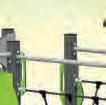
















Your local British Manufacturer leading the way with sustainability, quality and after sales support.






Our

























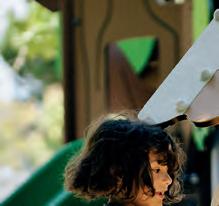
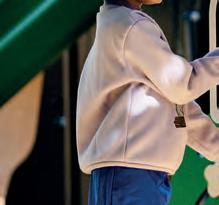
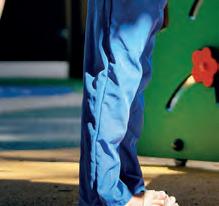
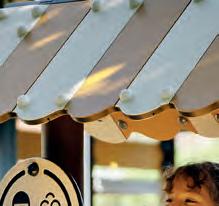

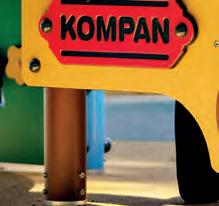

















































Sourcing and manufacturing locally is the most sustainable solution for all.










































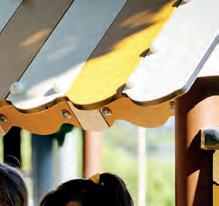
























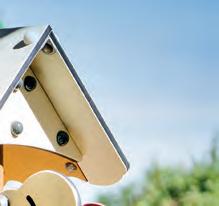


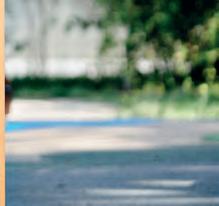


A new report has underlined the barriers many children face in finding safe, welcoming and inclusive spaces to play – and makes a powerful case for putting children at the heart of how built environments are planned and designed.
Published on 14 October, the paper, a House of Commons library research briefing titled Children, young people and the built environment, highlights how children’s access to outdoor play has been steadily eroded by traffic, parental safety concerns, inequitable access to green space and the steady disappearance of informal play opportunities. It also points to “antiplay” culture in some communities, where restrictive signage and housing policies have made it harder for children to use local spaces freely.
Calling for a “child-centred, place-based” approach, the briefing argues that neighbourhoods designed around children’s needs are healthier,

The paper calls for a “child-centred, place-based” approach
more active and more socially connected — and that enabling children to move independently through their communities supports both wellbeing and sustainability. For play professionals, the document provides valuable evidence and policy leverage to champion children’s
rights within planning, design and public policy. It could strengthen arguments in local consultations, inform play sufficiency assessments and help forge new partnerships between play organisations, planners and public health teams. For a more in-depth look at the paper, see p.16.
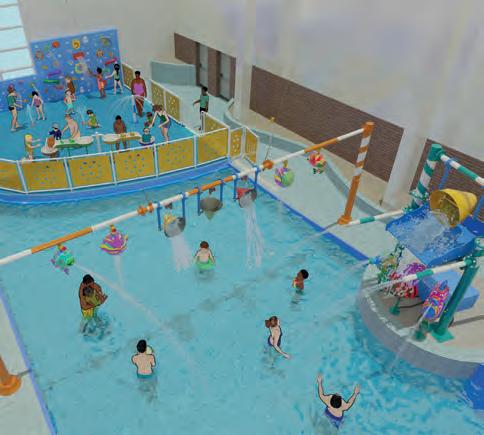
Bury St Edmunds Leisure Centre will benefit from an exciting new water play installation, as part of a larger redevelopment of the site. Supplied by Hippo Leisure, the play area has been designed to reflect the feedback generated through a consultation process involving centre users and local residents.
The centre is owned by West Suffolk Council and the council worked with Abbeycroft Leisure –which operates the facility – and Alliance Leisure to design the refurbishment works to reflect the feedback generated through a consultation process involving centre users and local residents.
Works are due to get underway in early November and the project team consists of Etec Group, Saunders Boston, Varsity Consulting, Hippo Leisure, Hensall and Leisure Energy.
















































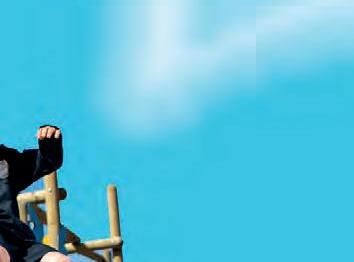













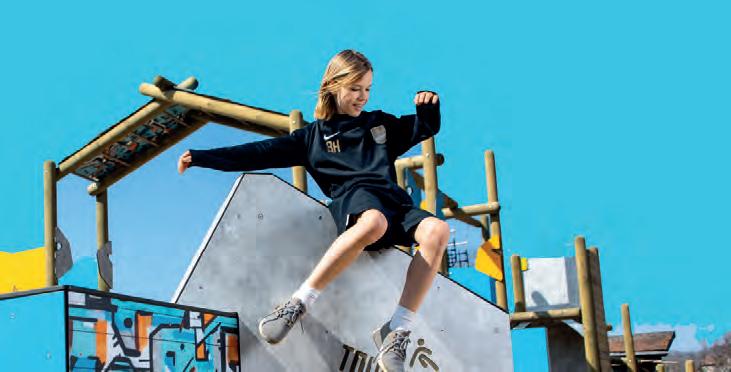

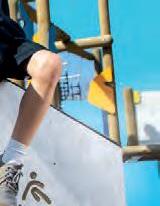























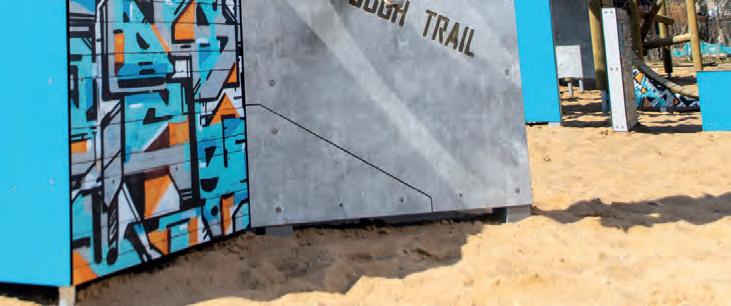


PlayNation speaks to the Association of Indoor Play about VAT – and whether children’s play should be taxed at 20%
When parents pay for their children to visit an indoor play centre, few realise that 20% of that ticket price goes straight to the Treasury. While children’s books, clothing, and food attract no VAT because they are viewed as essential to healthy development, play – which is arguably just as vital – is taxed like a luxury. And as we stand, most indoor play centres do not benefit from any form of VAT relief.
What makes this particularly hard to justify is that the UK’s VAT rate of 20% is higher than any country in the EU, except Sweden. Many European nations have long recognised the social and developmental importance of play, applying reduced or zero rates to children’s recreational activities. The UK’s position, therefore, places additional pressure on both families and operators, at a time when affordability and access to safe play are already under strain.
The Association of Indoor Play (AIP) believes this sends the wrong message about how we value children’s health and happiness. “Indoor play is not a treat; it is a fundamental part of childhood,” says Gordon Foster, Owner of Safari Play and AIP Committee Member who leads the Association’s lobbying efforts. “It supports emotional, social, and physical growth in ways that are critical to children’s long-term well-being.”
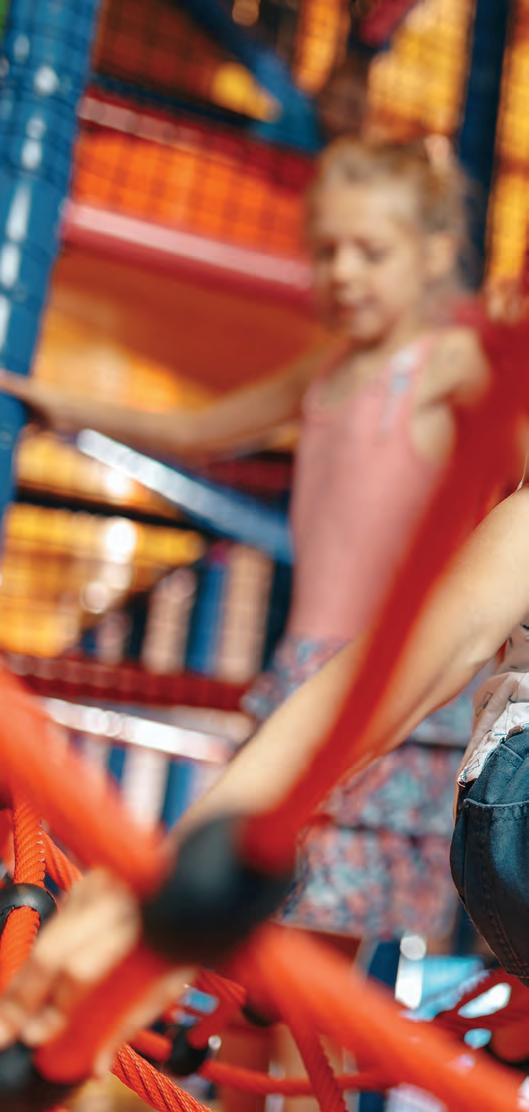
Play is a fundamental need
Indoor play is far more than entertainment. It is one of the few remaining safe, inclusive, and accessible environments where children can move, explore, and connect freely. Experts agree that play builds confidence, motor skills, emotional intelligence, and resilience. Research from the Play Commission and LEGO Foundation shows that play supports brain development, strengthens family bonds, and helps children learn cooperation and problem-solving skills that will serve them for life. At a time when both childhood obesity and mental
INDOOR PLAY ISN’T A LUXURY – IT’S A LIFELINE FOR CHILDREN’S HEALTH, HAPPINESS, AND DEVELOPMENT

health issues are rising sharply, play offers a powerful, preventative remedy. According to NHS data, nearly one in five UK children is classed as obese by the time they leave primary school, and referrals for anxiety and depression have increased significantly since the pandemic. Physical play encourages movement and cardiovascular health, while unstructured play helps to reduce stress, boost mood, and improve self-esteem.
“Children today spend more time indoors, on screens, and less time being active,” the AIP notes. “Indoor play provides a safe and stimulating environment where they can rediscover movement,
imagination, and joy. It supports not only physical health but also emotional balance.”
However, the affordability of play is increasingly under threat. Energy bills, business rates, and staffing costs have risen dramatically, forcing many operators to raise prices. The 20% VAT applied on top of these increases adds a further burden, often passed directly to families. For many parents, especially those managing tight budgets, that extra tax can be the difference between a visit to a play centre or staying home.

IF FOOD, BOOKS, AND CLOTHING ARE ESSENTIALS, WHY ISN’T PLAY? IT’S TIME WE STOPPED TAXING CHILDHOOD
This widening affordability gap has created a troubling new reality: play is becoming tiered. Families in lower income brackets are being priced out altogether, unable to justify spending on what has become a heavily taxed form of recreation. The result is that children who could benefit most from the social, emotional, and physical advantages of play are the very ones now excluded. Research consistently shows that children from lower income households are more likely to experience poor mental health and obesity, two issues that indoor play can help to address through physical movement, social interaction, and emotional release. Yet, for many, the cost of entry has become a barrier too high to climb. Play should never be a privilege reserved for those who can afford it. It is a basic need, integral to healthy childhood development, and should be accessible to every child regardless of family income. Making play affordable is not just a matter of fairness; it’s an investment in public health, community wellbeing, and the next generation’s resilience.
The UK already applies a zero VAT rate to children’s essentials such as food, clothing, and books. Each is recognised for its contribution to growth and development. Play deserves the same consideration. It nourishes the body and mind, helps to prevent ill health, and strengthens community life.
Reducing or removing VAT on indoor play would make it more affordable for families while recognising its true value to society. As the AIP argues, “If we believe children have a right to play, we must stop taxing it like a luxury and start valuing it as the necessity that it is.”
The next step is clear: government must recognise the right of every child to play VAT-free. Just as we exempt food, books, and clothing because they are essential to development, play must be treated with the same respect. It is not a privilege; it is a right. And it’s time our tax system reflected that.


A new Commons Library brie ng has called for child-centred design of public space. But what does it mean for play professionals and organisations – and what are the opportunities it o ers?

new Research Briefing published by the House of Commons Library emphasises the deep challenges children and young people face in accessing safe, welcoming and inclusive outdoor space and argues strongly for a child-centred, place-based approach to how we design and manage our built environment. For those working in the play sector, the briefing, titled Children, young people and the built environment, is a timely reminder – and a possible lever for change – about how planning, design and public policy intersect with children’s everyday freedom to play.
to play: what the brie ng highlights
The briefing outlines a series of structural, cultural, and environmental barriers that restrict children’s ability to use outdoor space, many of which are familiar to play practitioners. These include a decline in unsupervised outdoor play, inequitable access to outdoor space, cultural and safety fears and the rights and needs of children getting ignored and forgotten in policy making and built environment design. It’s no secret that, over the past century, children’s freedom to roam, explore, and play outside without adult supervision has drastically


Children’s freedom to roam, explore and play outside has drastically reduced – but it doesn’t have to stay that way
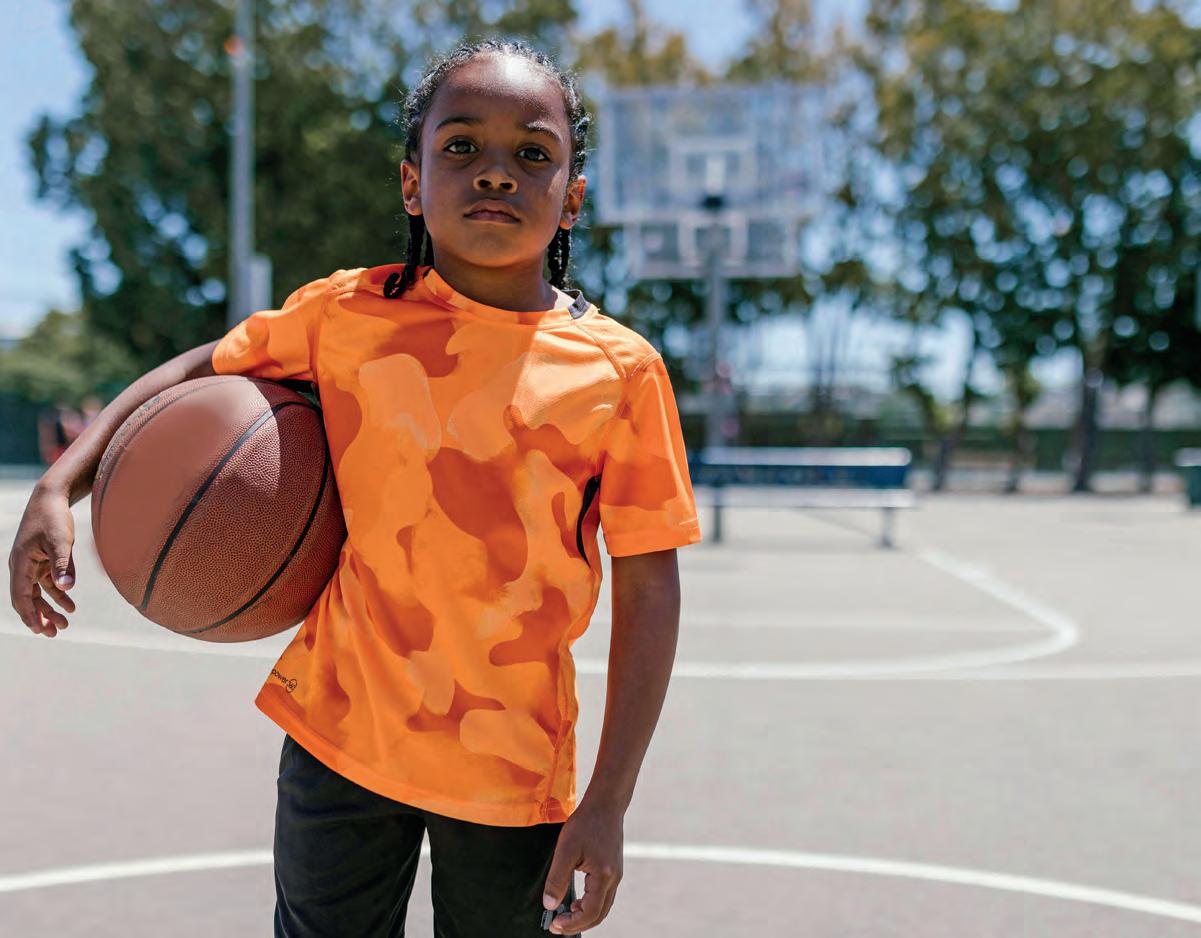
reduced. The briefing points out that many children now spend most of their non-school hours indoors – a shift linked in part to concerns about safety, traffic, and social norms.
Access to private or shared gardens is also uneven: in England, one in eight children live in households without garden access; in London the figure rises to one in five. As a result, there are disparities in how much time children spend outdoors between affluent and deprived areas, and among ethnic groups. Matters are made worse by parents and caregivers often citing fear of strangers, traffic risks, disturbance to neighbours and an “anti-play culture” (bans on ball games) as obstacles to letting children play freely outdoors. Too often, housing providers or management companies still use “no ball games” signs and similar policies. In addition, the built environment also often prioritises motor traffic over safe pedestrian movement, lacks

thoughtful public open space and is shaped by multiple overlapping institutional responsibilities
The briefing also highlights that children and young people are not a discrete protected group under the Equality Act (except within employment), meaning there is no automatic requirement to consider them per se in many planning decisions. Against this backdrop of constraints, the briefing positions a child-centred, place-based approach as a path forward — one that treats children’s access, movement, and participation in public space as a core consideration in planning and development.
A key argument in the briefing is that by embedding children’s needs into planning and design, society can generate broader societal benefits: healthier, more active populations; stronger social connections; and more equitable, sustainable neighbourhoods. It highlights how
outdoor play, movement and unstructured exploration are linked to improved physical health, mental wellbeing, reduced loneliness and the development of autonomy – all critical in childhood. There is, the report states, an opportunity to create more vibrant, resilient communities. When children and young people can move safely through neighbourhoods and feel ownership of public space, communities tend to be more lively and socially cohesive. Integrating child-friendly features into new developments or retrofit schemes can also contribute to more walkable, traffic-calmed, human-scale environments, which align with broader policy aims – from net zero and active travel to creating more livable and “safe” streets.
The briefing cites real examples of child-friendly design approaches:
Whittington Estate (London) and Marmalade Lane (Cambridge) as developments that foster movement, connection and play.
Local authorities like Leeds have adopted play sufficiency action plans. Hackney has produced “Growing Up in Hackney” planning guidance.
A number of councils have removed “No Ball Games” signage and replaced it with positive, welcoming messaging for children.
International frameworks, such as UNICEF’s Child Friendly Cities, Urban95, and the “Start with Children” movement, are held up as global reference points.
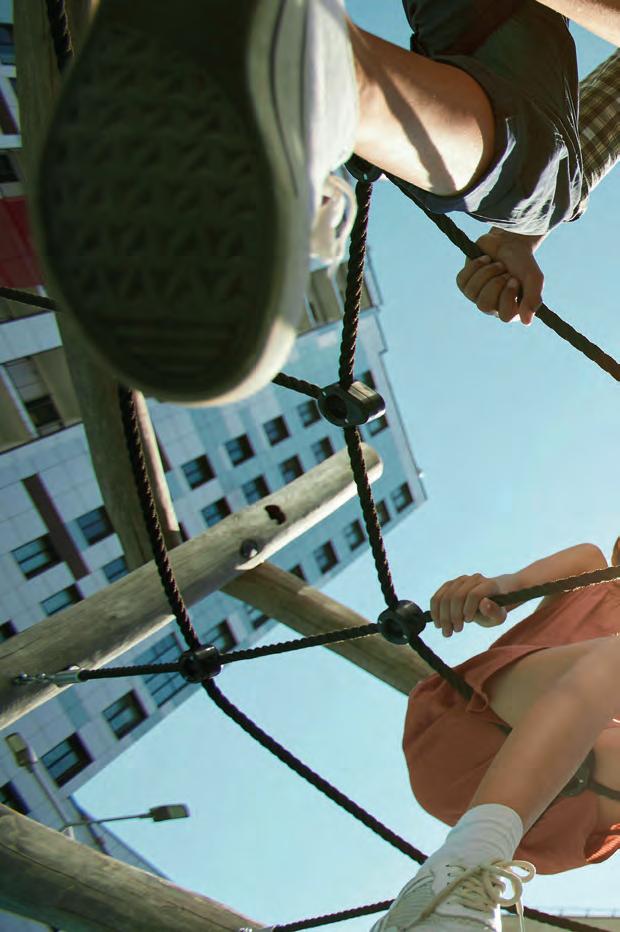
For play professionals and organisations, whether in local government, play advocacy, design, commissioning or community groups, the Commons Library briefing presents both opportunities and challenges. It offers new policy leverage and a stronger evidence base for those seeking to influence how local environments are planned and managed. The report provides credible backing for those arguing that children’s needs should be a core consideration in local plans, masterplans and development briefs. It allows play advocates to ask more confidently of planning authorities and developers: where are the safe routes, thresholds and inclusive spaces for children?
Because the briefing spans planning, transport, health and community policy, it also opens new avenues for cross-sector collaboration. Play organisations may find more opportunities to work alongside planners, public health teams, highways departments and regeneration specialists to deliver
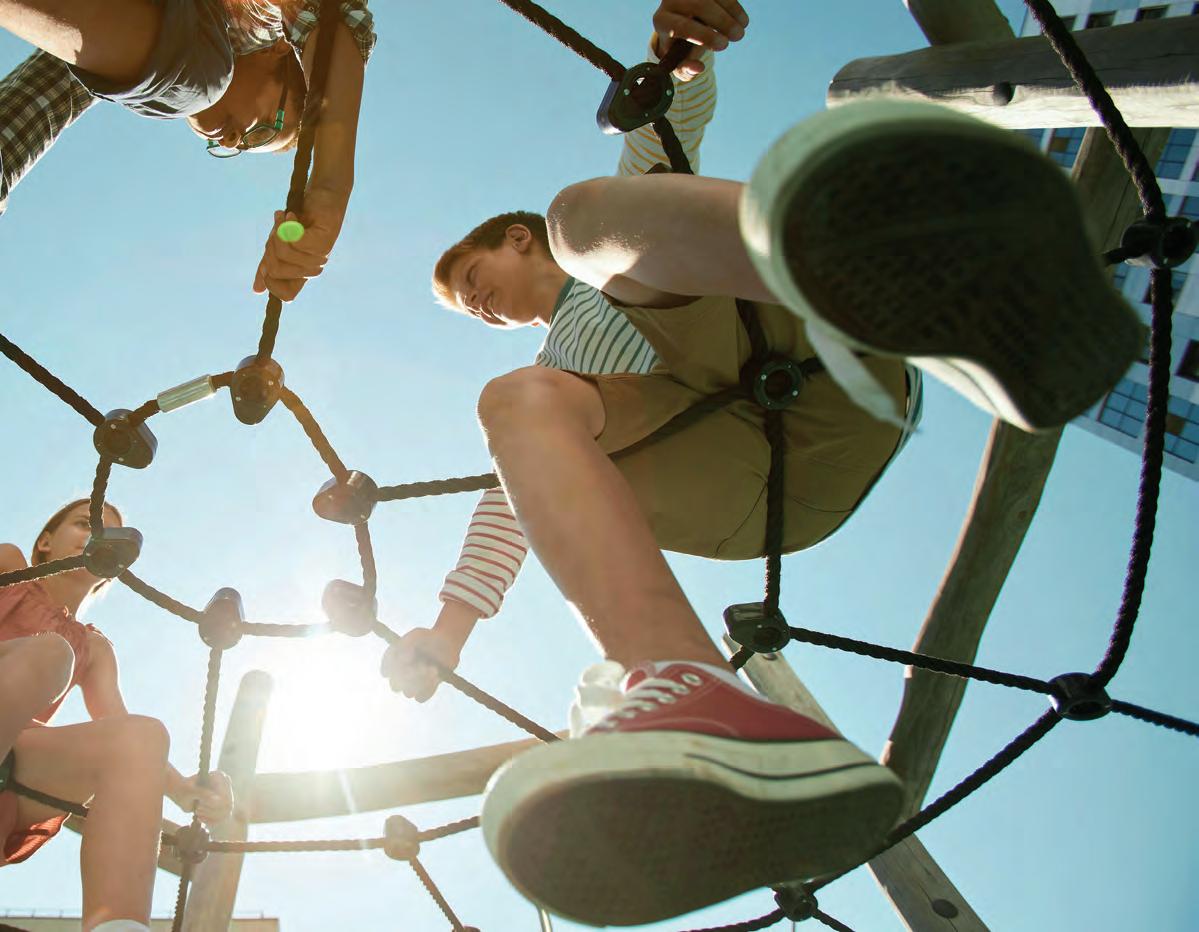
joined-up, child-friendly environments. At the same time, as funders increasingly focus on “healthy places” and social infrastructure, the report may help play organisations align their projects with wider strategies around active travel, nature in the urban realm and intergenerational public space.
In practice, the briefing encourages play professionals to think beyond traditional fenced play areas and consider how children move through neighbourhoods and discover informal places to play – from green corridors and street corners to overlooked urban spaces. It reinforces the importance of understanding local context, addressing barriers such as traffic or safety fears, and co-designing spaces with children rather than relying on generic models. The evidence presented also strengthens the case against restrictive “no ball games” policies and supports more welcoming management of shared outdoor spaces.
The report’s focus on outcomes suggests play practitioners could build monitoring and
evaluation into their projects, demonstrating benefits such as increased outdoor activity, improved wellbeing and social connection. Over time, these insights may help influence national design guidance, local planning policy and play sufficiency duties, gradually raising expectations for how play is integrated into community design.
While the briefing itself is not policy, it provides a clear framework that could shape future practice. Policymakers may use it to inform planning reform, encourage local authorities to assess play sufficiency and prioritise funding for child-friendly public realm projects. If its recommendations gain traction, it could even help foster a cultural shift in design and planning – one where children’s movement and play are seen not as constraints, but as vital ingredients of thriving, liveable communities. For play professionals, the moment feels ripe: this Research Briefing strengthens the evidence base and legitimises calls to embed play more deeply within the planning and design of everyday spaces.
From renewable raw material to circular design, Corkeen redefines playground sustainability
From the bark of the cork oak tree — a renewable, recyclable, and natural raw material — comes one of the world’s most remarkable examples of circular sustainability. Cork is harvested without harming the tree, which continues to grow and regenerate its bark over its lifetime. In doing so, cork oaks capture CO2, helping to fight climate change while supporting biodiversity-rich ecosystems.
Building on this natural heritage, the Corkeen system brings cork’s sustainability benefits into safe, innovative playground surfaces.
A safe and natural choice
Corkeen integrates natural cork into a fall protection surface that is completely free from harmful substances. The system contains no toxins or chemicals such as heavy metals, EDC, T-COV, formaldehyde, or PAH. Unlike many other playground materials, Corkeen is free from plastic and rubber granules that can release microplastics into the environment. By choosing cork, Corkeen helps reduce pollution and supports healthier communities.
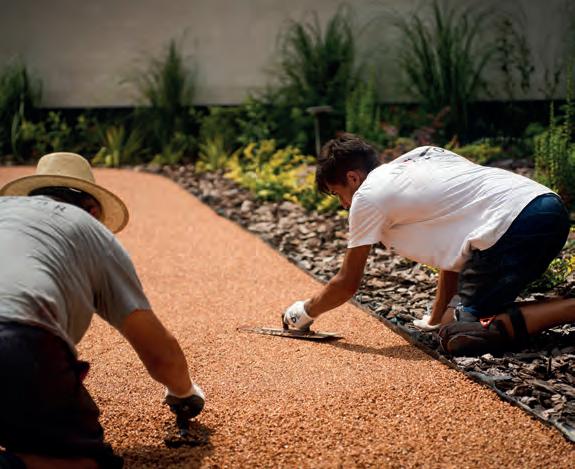
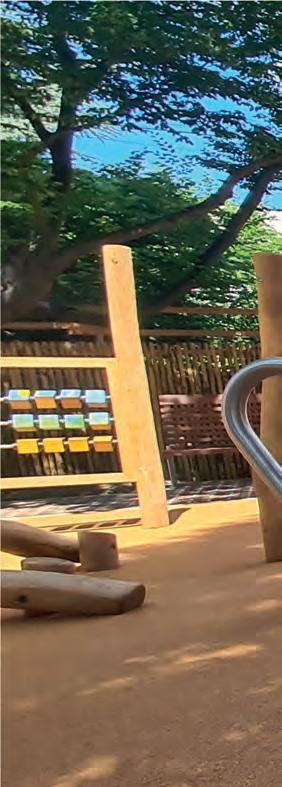

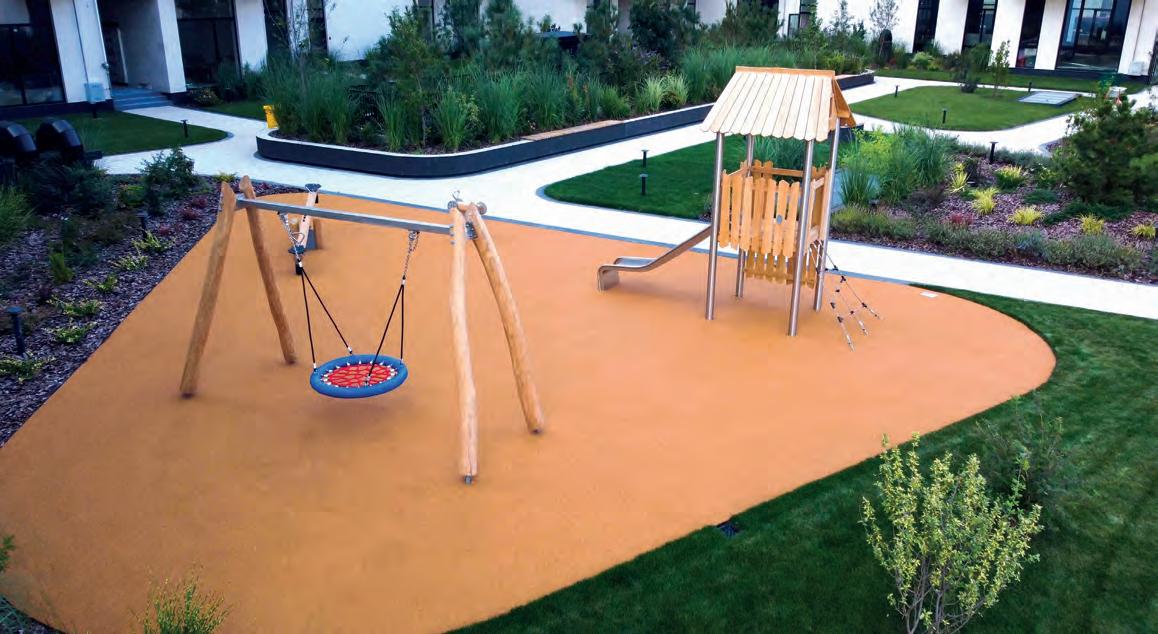
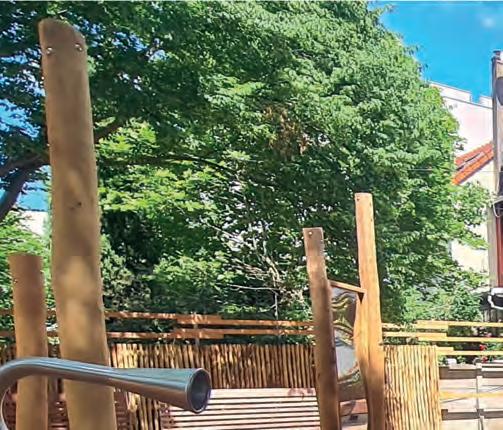

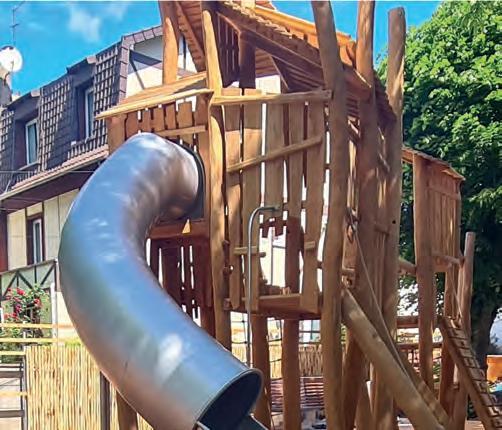
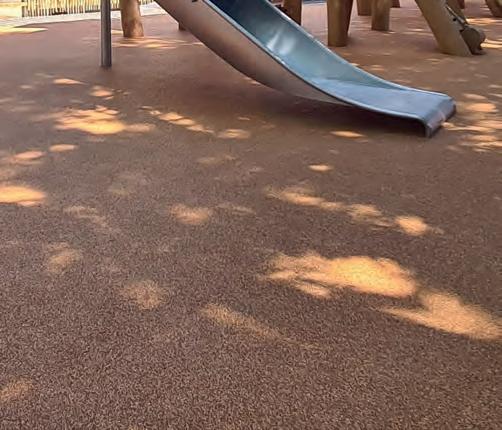

Corkeen Play Original is made of 90% cork, using leftovers from the cork industry as raw material — a clear example of circular economy principles where nothing is lost and everything is transformed.
More than 60% of the energy needs in Corkeen’s production plants are met through biomass (cork powder), a CO2-neutral energy source.
By combining safety, performance, and environmental responsibility, Corkeen offers a playground surface that goes beyond function:
● Made from a natural, renewable, and recyclable raw material
● Free from harmful substances and microplastics
● Produced with CO2-neutral energy sources
Corkeen stands as proof that playground safety and sustainability can go hand in hand, harnessing nature’s potential to create a solution that supports children, communities, and the planet. More at https://corkeen.com
One of those benefiting from Corkeen is the municipality of Colombes, in the Paris metropolitan area. The local authority recently inaugurated a new playground equipped with the Corkeen system. The project is part of the city’s broader strategy to create more inclusive and environmentally responsible public spaces. The choice of Colombes strengthens Corkeen’s international presence as a credible and innovative alternative for municipalities seeking environmentally friendly surfaces without compromising the highest standards of safety and comfort.
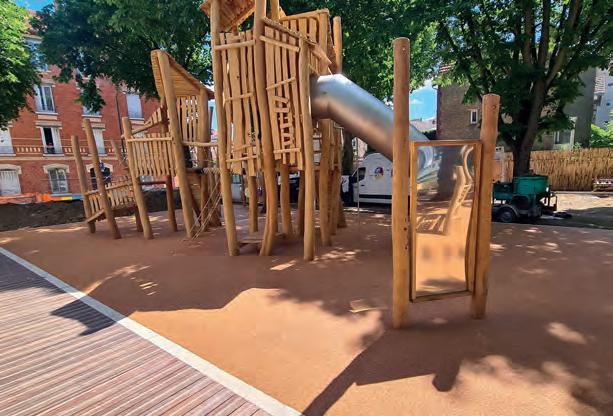
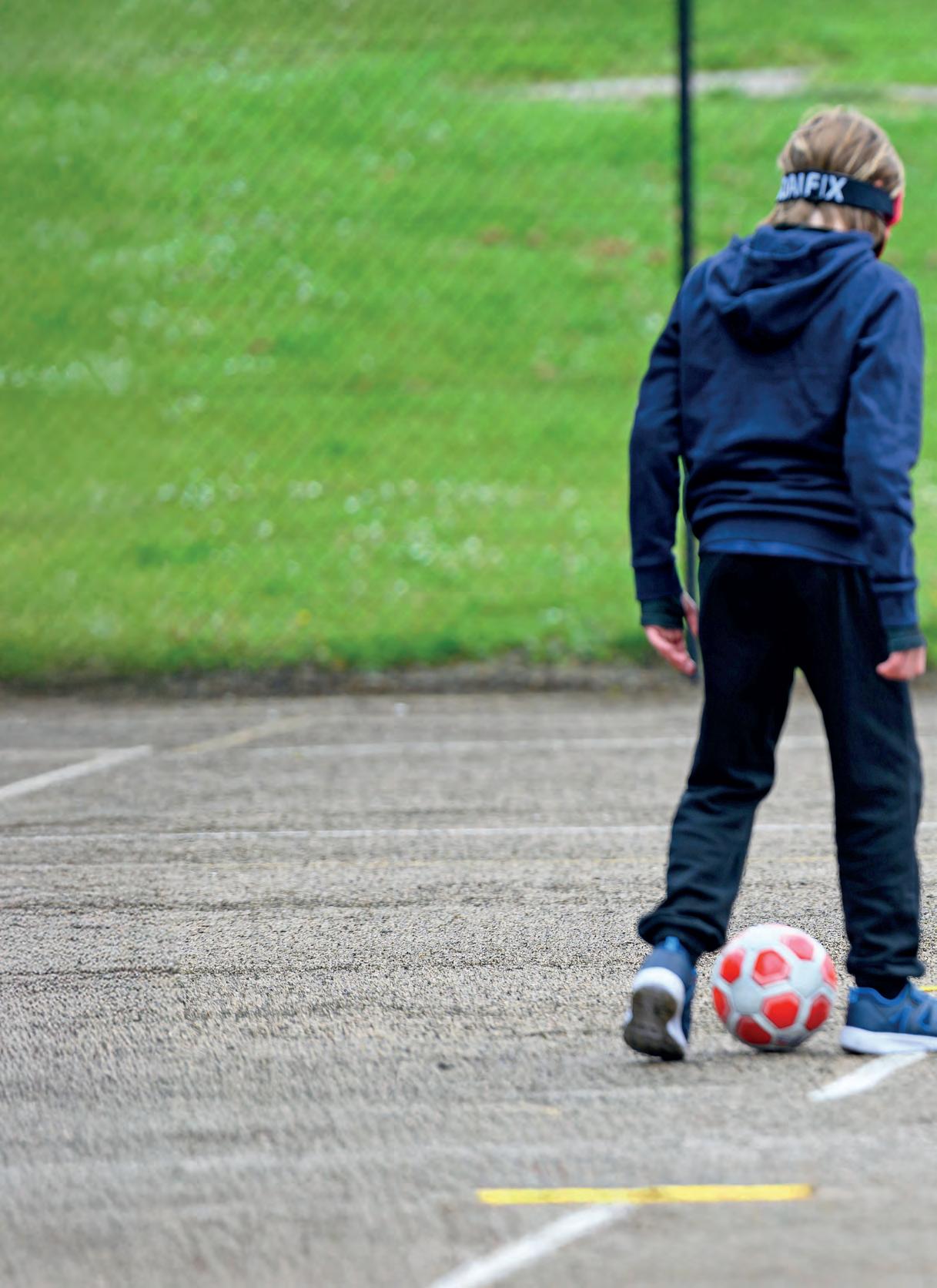
Jack Shakespeare, Director of Strategic Projects at 4Global, explains why the school holidays are a missed opportunity for children’s health
Figures published over the summer indicate that summer holiday clubs now cost parents an average of £1,076 per child. For the sport and play sector, the ever-increasing costs are an opportunity to highlight the number of lowcost, safe and fun activities and programmes it offers. This is particularly true if the sector focuses not on putting on more activities, but making activities more accessible.
Activities and holiday clubs are simply unaffordable for many, particularly those in lowerincome households. We know those in lower IMD (Index of Multiple Deprivation) groups are less likely to participate in structured activity, even though facilities often exist nearby.
Insights from the Moving Communities Community Survey and the Consumer Insight Panel put it plainly - cost is the number one barrier preventing children and young people from being active, with 37% of respondents ranking it as the biggest factor. The latest Active Lives Children and Young People survey showed those from the least affluent families are the least likely to be active, with only 45% meeting the Chief Medical Officers’ guidelines, compared to 57% of those from the most affluent families. Too often, we assume that putting on a programme is enough, but as an industry, I’m sure we can all point to lots of local examples

of activities happening over the summer. So perhaps we don’t need more opportunities, but smarter delivery to improve accessibility. This means tackling access barriers such as:
● Raising awareness of what’s available locally
● Operating timings that fit around working parents and carers
● Confidence, both in parents and children, to engage
● Inclusive and enjoyable participation environments
As decision-makers in the industry, considering large strategic challenges, it is also easy to overlook the most important part in all of this – fun. We know enjoyment is the single biggest factor in improving a child’s relationship with sport
and physical activity, in turn increasing activity levels and sustained participation. This means we need a focus on the quality and inclusivity of the experience, ensuring the fun doesn’t get lost whilst trying to create a packed schedule of activities.
Another insight highlighted by the Moving Communities data is the vital role parents and carers play in helping children to be active. Children are significantly more likely to be active if their parents are, despite more than half of parents (55%) not seeing themselves as role models for physical activity.
Regardless of how they view their role,
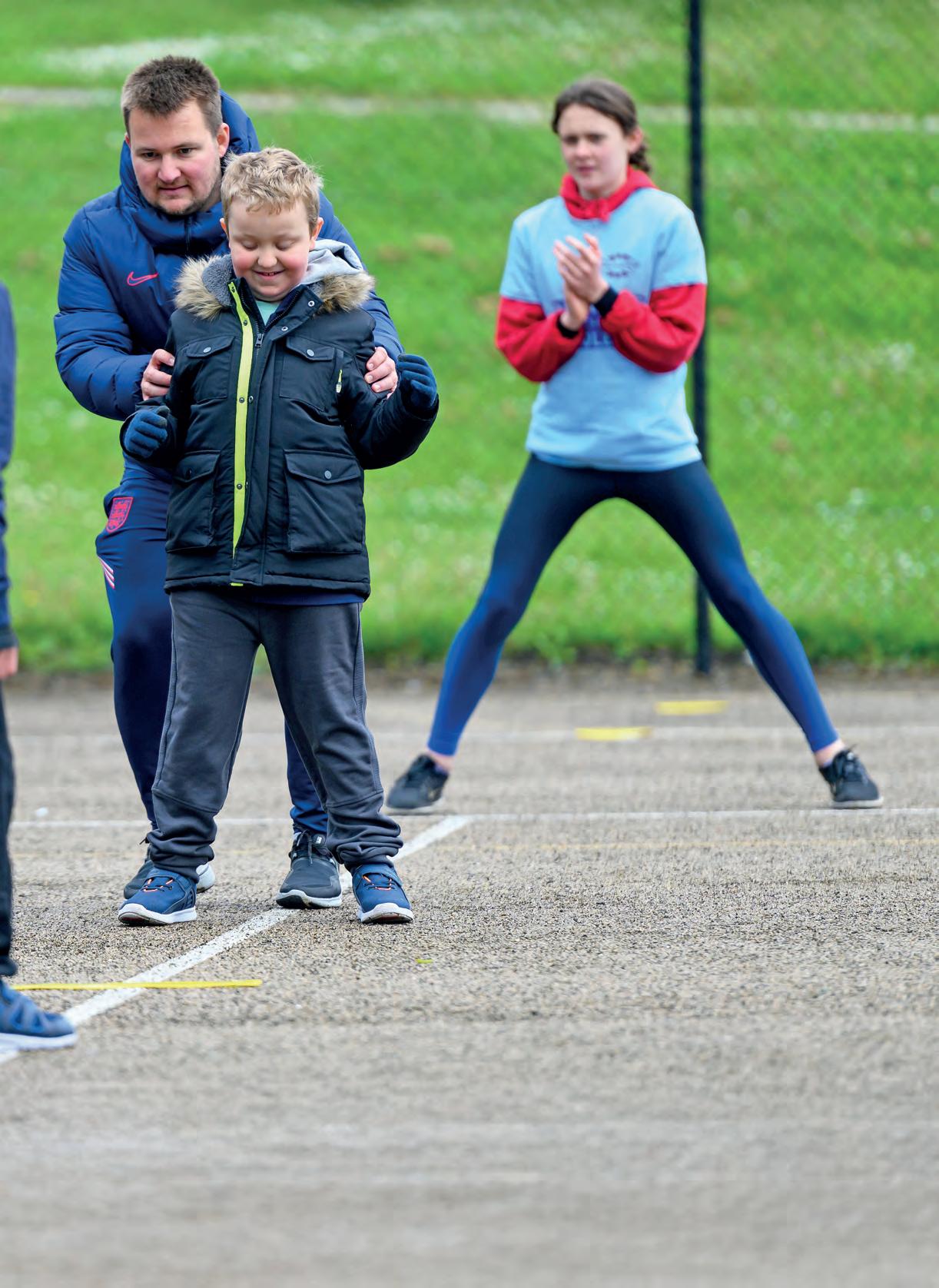
parents have a powerful influence. They act as key enablers by paying for activities, arranging transport, and building their child’s confidence. However, for parents to fulfil this role effectively, activities must be accessible through reducing the barriers we’ve already highlighted.
Moreover, we can’t just think in terms of activity schedules and timetables, we need to think about how and where we communicate. Families from lower IMD groups may not be plugged into the traditional leisure centre networks or local authority bulletins. Messaging needs to go beyond websites and newsletters, reaching into
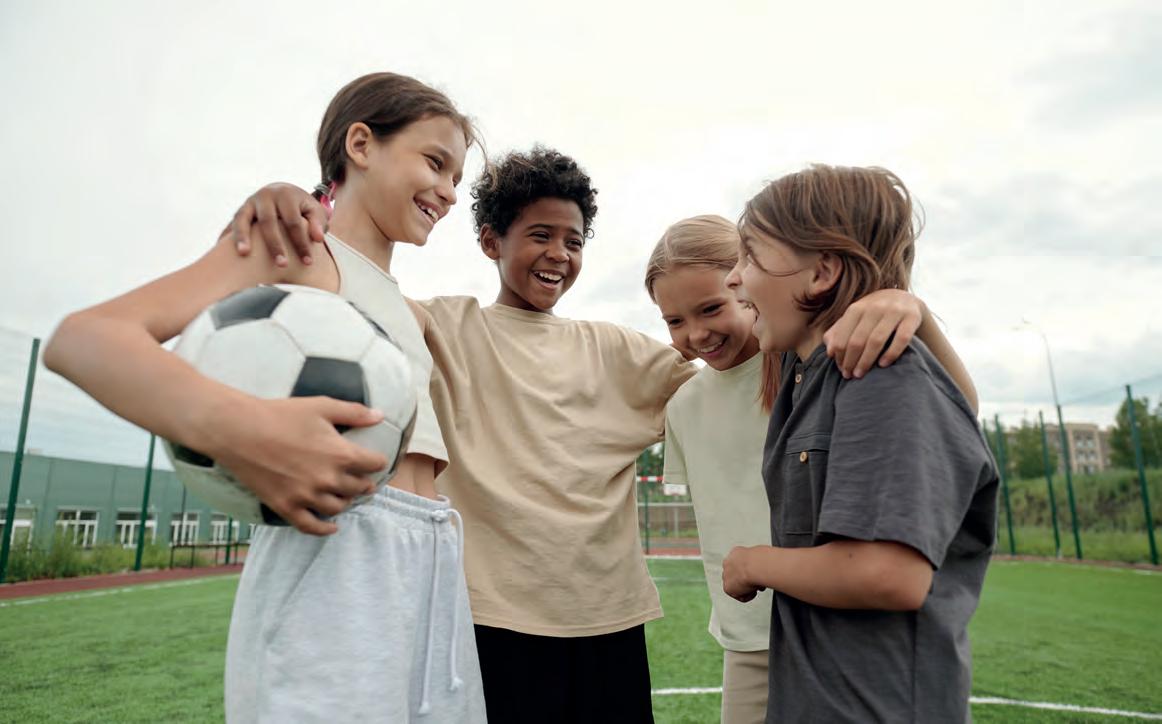
the heart of communities, through systems and services that families consistently engage with like schools, community groups and youth services.
The good news is that we now have the tools to do all of this better. Moving Communities data enables operators, local authorities and delivery partners to map who is and isn’t using services, understand why, and target support where it’s needed most. From postcode-level participation data to consumer insight panels, we have more visibility than ever into where the gaps are. Now we need to act on it.
Moving Communities is a platform designed to provide active partnerships, local authorities, delivery partners (including national governing bodies, system partners and local organisations) and key stakeholders with intelligence and actionable insights on quantifiable data.
A partnership between Sport England and 4Global, it tracks participation at public leisure facilities and provides new evidence of the sector’s performance, sustainability and social value. Bringing together disparate data sets into dashboards and maps, it assists stakeholders to make informed decisions to get communities moving.
Arecent study conducted across the UK and US by FUNdamentally Children found that social development is consistently rated as the most important factor for a successful school transition. Familiarity with other children, opportunities to practise turn-taking, and playbased activities that promote communication and confidence all featured highly. Emotional regulation, listening, and independence were identified by teachers and parents as common challenges, particularly for children with additional needs

Play-based learning was seen as central to readiness. Open-ended, child-led toys and collaborative activities were identified as effective tools for building resilience, curiosity, and communication skills. For families of deaf children and those with SEND, consistent, accessible communication and tailored social stories or confidence-building resources were particularly beneficial. By embedding readiness into everyday routines, relationships and playful interactions, we can ensure that every child has the confidence, capability and emotional resilience to thrive at school and beyond.

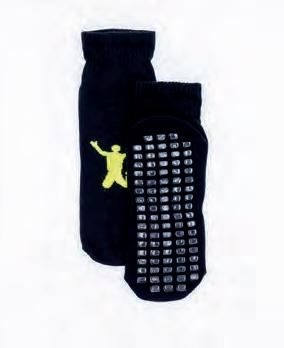
Retail-ready grip socks Drive secondary spend













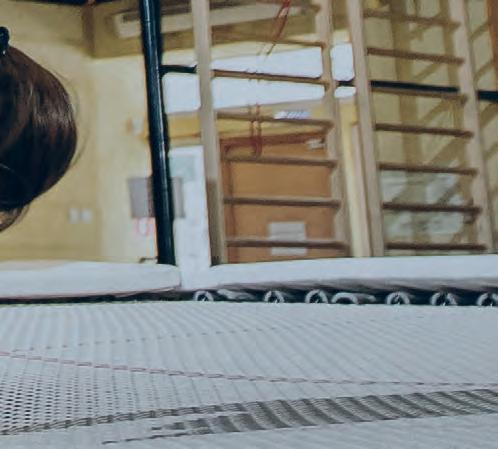





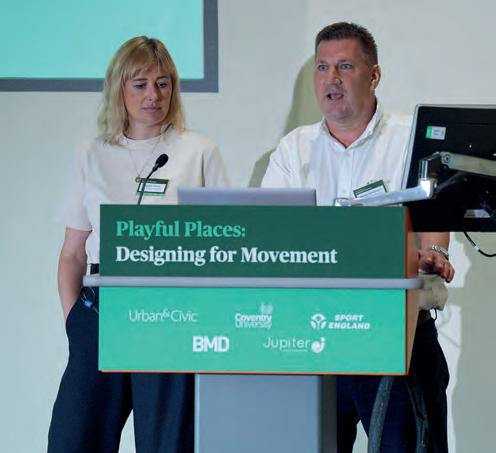
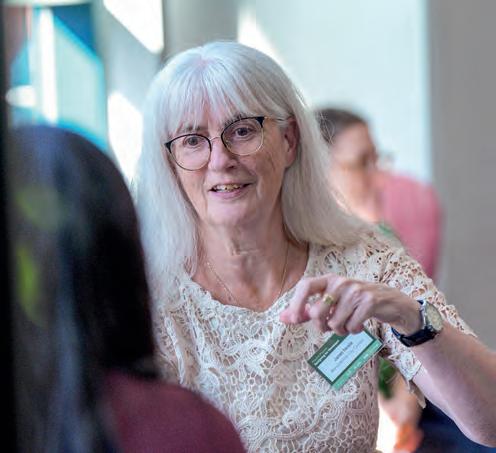
A study has suggested how changes to play space design could have a signi cant impact on children’s health and wellbeing. PlayNation takes a closer look at the research, which was revealed at the Playful Places Conference, held in September
The Playful Places Conference took place on 9 September at Coventry University, hosted by Urban&Civic along with Sport England, Bradley Murphy Design and Jupiter Play. Among the highlights was a session that released findings from a recent PhD study, showing how changes to play space design can have a major impact on young people’s happiness and wellbeing. Specifically, the study shows how outdoor play spaces have a vital role to play in supporting children’s physical literacy, including their movement, motivation and confidence levels. Design choices, including landscape use and equipment selection, can also enhance health outcomes and skill levels, especially in more deprived communities.
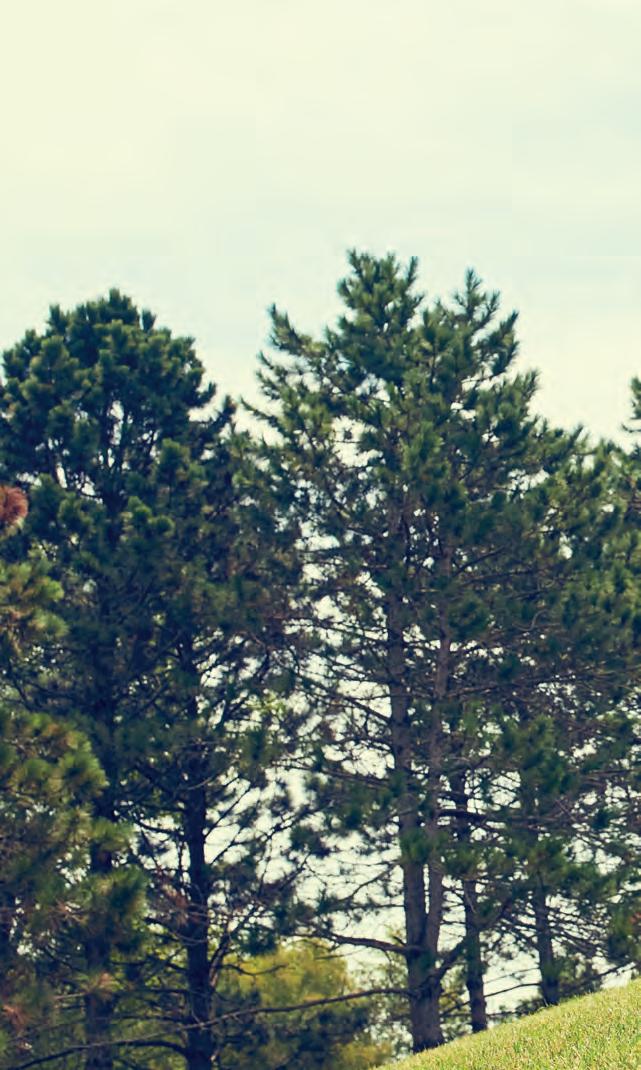
The research highlights how the industry can make better use of terrain and green space to support children’s physical development. It is one of just five global studies exploring the relationship between play space design and physical literacy, a term which refers to the degree to which we have a positive and meaningful relationship with movement and physical activity. While many of the findings may reflect principles already applied in some play spaces, the research reveals there is an opportunity to provide more fundamental movement skills (FMS), which are learned motor patterns that children need to develop, through enhancements to landscaping and overall design.

These skills are a subset of physical literacy, a term regularly cited by Sports England, and are proven to have a significant impact on a child in later life across multiple indicators. For example, a greater level of competency in FMS gained at an early age increases the likelihood of being physically more active in adulthood and can improve school performance, and overall wellbeing.
Led by Dr Amy Stringer from Coventry University’s Research Centre for Physical Activity, Sport and Exercise Sciences, the study was conducted over a three-year period, and included interviews with play space designers, developers and parents, as well as on-site analysis of children’s behaviour at three playgrounds over 720 hours, using video analysis software.
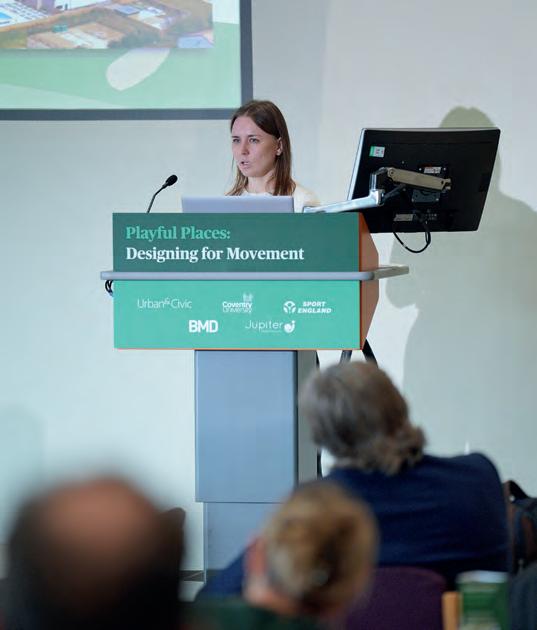
Play spaces are much more than just equipment, they’re vital infrastructure for healthy, thriving communities
The research revealed four key takeaways
Current playground equipment often lacks opportunities for throwing, kicking, and catching, activities which are crucial to developing FMS. This gap largely exists because the risk of theft prevents play spaces from providing loose balls, while tethered balls pose health and safety concerns. As a result, there is an opportunity for the industry to consider innovative ways to incorporate objectcontrol elements within play environments. Introducing these features could significantly enhance children’s development in areas such as coordination, motor skills, and spatial awareness.
Play spaces are often designed as flat, square areas due to lower maintenance costs, but undulating surfaces and varied terrain encourage a wider range of movement, supporting the development of FMS like balance, jumping, climbing and coordination. The research found that simply running in a straight line from one piece of equipment to another doesn’t provide the same developmental benefits.
Larger play structures, such as climbing frames, offer significant benefits. Firstly, they are often multifunctional, which means they can incorporate various play values such as climbing, sliding, pulling, and hanging elements that encourage exploration. They also accommodate more children at once, fostering greater social interaction, as well as extended periods of play as research has shown that children tend to play longer on equipment when they are with their peers rather than alone or with an adult.

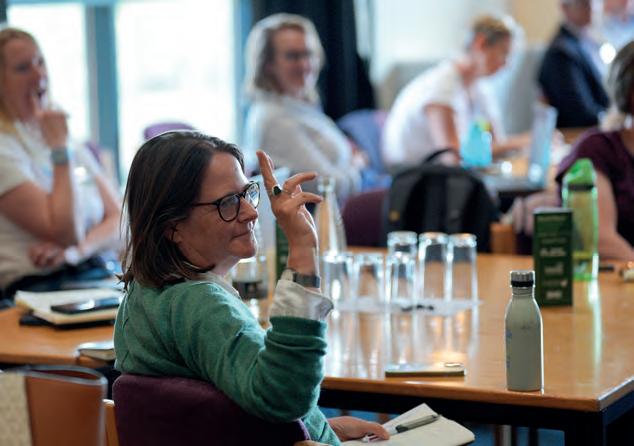
Larger structures also tend to be easier to maintain. Unlike smaller pieces of equipment such as roundabouts, which require frequent rotation checks, bigger installations generally demand less ongoing upkeep. This therefore suggests that when budgets are limited, it is preferable to invest in a single, well-designed, larger piece over numerous smaller, less engaging items.
Many local authorities face budget and resource constraints, leading them to naturally opt for less expensive playground equipment. However, lower-quality materials tend to rust more quickly, resulting in more frequent replacements or, in some cases, equipment not being used at all by children. By taking a more long-term approach to selecting equipment, considering factors like material durability and terrain, local authorities can maximise the impact of their budgets and create play spaces that offer lasting value.

According to Dr. Stringer, the study and its findings are important as there is “remarkably very little” research on play space design.
“What we have achieved here represents one of only five studies ever conducted worldwide, and has the potential to profoundly influence the future design of outdoor spaces, shaping the physical literacy of generations to come,” Stinger said.
“While local authorities may not all have dedicated play agendas, they are undoubtedly focused on tackling issues such as obesity, deprivation, and education and skills – all areas where play can take a leading role.
“This research highlights where simple changes, especially when it comes to combining landscape and play, could better support children’s development across a range of settings and we hope it ignites thinking from across the industry more generally around outdoor play and how we can optimise these environments in the future.”
Johanne Thomas, Regional Director for Communications, Communities and Partnerships at Urban&Civic, added that the research highlights the importance of design.
“Play spaces are much more than just equipment, they’re vital infrastructure for healthy, thriving communities,” Thomas said. “This research shows how good design, from landscape choices to play equipment, can unlock long-term health, social and educational benefits for children.
“Importantly, it supports our belief that integrating green space and play, as we have done across our sites such as Houlton in Rugby, provides more opportunities for movement, interaction and development, but there is clearly more we could be doing as an industry.
“We don’t believe there is a one size fits all approach to this but we do hope this research inspires more designers, developers and local authorities to consider physical literacy when shaping or assessing play spaces.”
Proludic is a pioneer in play with a presence in more than 50 countries. PlayNation sat down with Rob Baker, Managing Director of Proludic’s UK business, who says that, despite its global size, the company is still a family business at heart


Could you give us a brief history of Proludic?
Proludic’s story began in France in 1988, with a simple yet enduring mission: to create outdoor play and sports areas where people (but particularly the young) of all ages can thrive, develop their skills and improve their wellbeing. What started as a small, family-run enterprise designing natural, timber-based play equipment for local schools and rural villages, has evolved into a global organisation recognised for its quality, innovation and inclusivity.
From its beginnings, Proludic has remained a privately owned company, still led today by its founder, Denis Le Poupon and his family. Their continued involvement & financial independence ensures that the original spirit of the business, one that values its staff, creativity, craftsmanship and clients, remains firmly embedded in its culture.
In the UK, Proludic Ltd was established in 2002 and has now been operating for more than 20 years. From its base in Nottingham, the subsidiary began as a small, dedicated team and has since grown to employ over 50 professionals, including Area Managers, Key Account Managers, Play & Sports Designers, Landscape Architects, Project Managers and After-Sales specialists.
What makes great play design? Is there a magic formula or is it a learned trade?
In our opinion great play design is both an art and a craft underpinned by expertise. At Proludic, it comes from the experience and creativity of our talented team, who continually learn, innovate, and refine our product range and design techniques. From fully inclusive spaces, like The Nook Children’s Hospice, to natural Robinia creations at Pennington Flash, our diverse designs drawn from over 1,200 pieces of equipment celebrate imagination, inclusivity, and harmony with nature, ensuring every play experience is inspiring, engaging, and meaningful.
There’s a renewed push to get play recognised at government level. How important is it to have a play strategy that would ringfence investment for play?
The recent strides to get play on the government agenda are both vital and long overdue. With continued growing pressures on children, the distractions of screens and increasing concerns over the decline in physical and mental wellbeing among the next generation,

an invigorated national strategy to tackle these issues head-on is hugely welcome.
As a nation, we must be vocal, and, through the campaigns led by Play England, the Association of Play Industries (API) and other like-minded organisations, we must be proactive in ensuring that every child has access to high-quality, safe and engaging play opportunities, that not only bring joy but also support learning, development and wellbeing.
The introduction of a wider-reaching, reinvigorated national strategy that ringfences increased investment for play would be truly transformative, securing long-term, sustainable funding for well-designed, inclusive play areas that would enrich communities via accessibility across the country. Every child should have the right to play outdoors in safe and inspiring environments where they can explore, socialise, and discover more about themselves and the world around them, developing the emotional, social and cognitive skills that are essential for healthy growth and development.

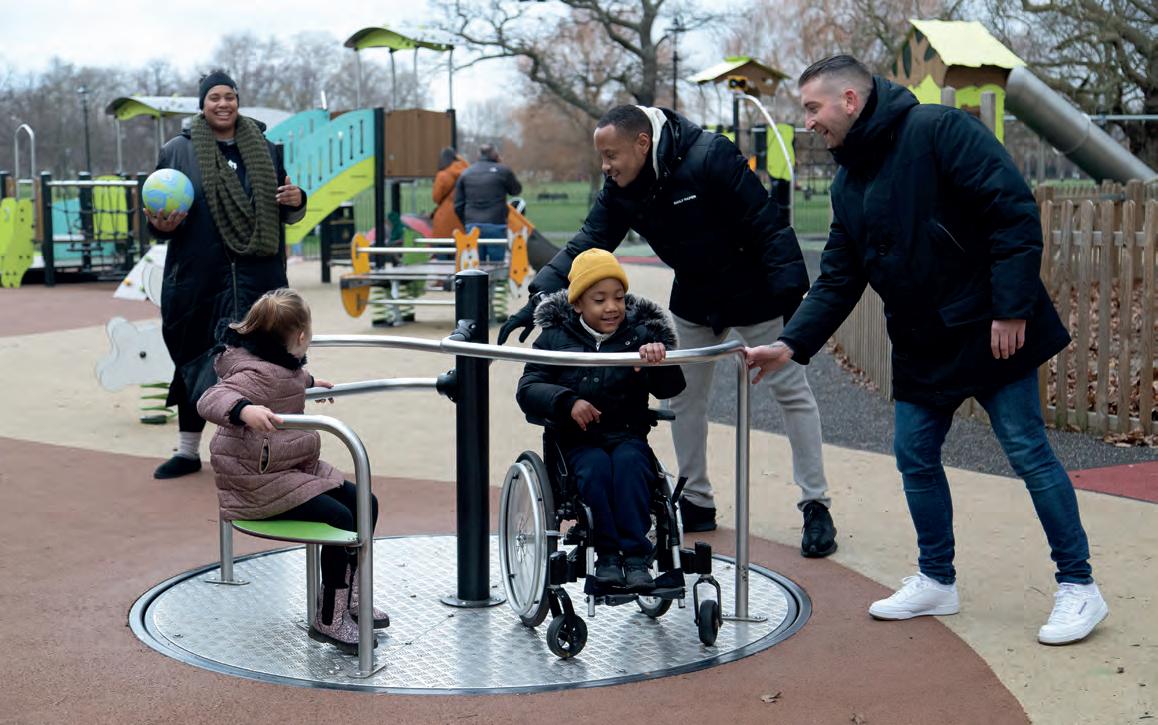

What do you put Proludic’s success down to?
It stems from a combination of strong family values, staff commitment and a culture that empowers creativity and innovation. As a familyowned business, Proludic has the advantage of taking a long-term view, investing in people, client relationships and ideas rather than short-term profits. The four founding values – Experience, Innovation, Commitment and Proximity –continue to shape everything Proludic does.
Proludic Ltd’s success is, then, built on three key factors. Firstly, its ability to listen, working with people to understand their passion, their aspirations and their community’s needs. Secondly, its ability to be agile in the marketplace. We have to be adaptable and our approach has to be fluid, to suit the needs of every client and the sector in which they operate. Lastly, our employees are central to our ongoing success. The UK team prides itself on having a close-knit spirit, where every individual feels valued, empowered and motivated to deliver their best work.
are the company’s main markets and how big/important is the UK?
Proludic’s global presence spans more than 50 countries, supported by eight subsidiaries and an extensive network of distributors. We
Every child should have the right to play outdoors in safe and inspiring environments
are a major player across Europe, with seven subsidiaries operating in the region. Europe remains the backbone of Proludic’s business, both for its design excellence and its high standards of safety and sustainability.
Within this network, the UK market holds special importance. Since the creation of Proludic Ltd in 2002, the UK arm has developed to become the largest subsidiary outside of the founder nation. The combination of the UK operations culture, innovative approach and resulting success in our marketplace, has earned the respect of the wider group.
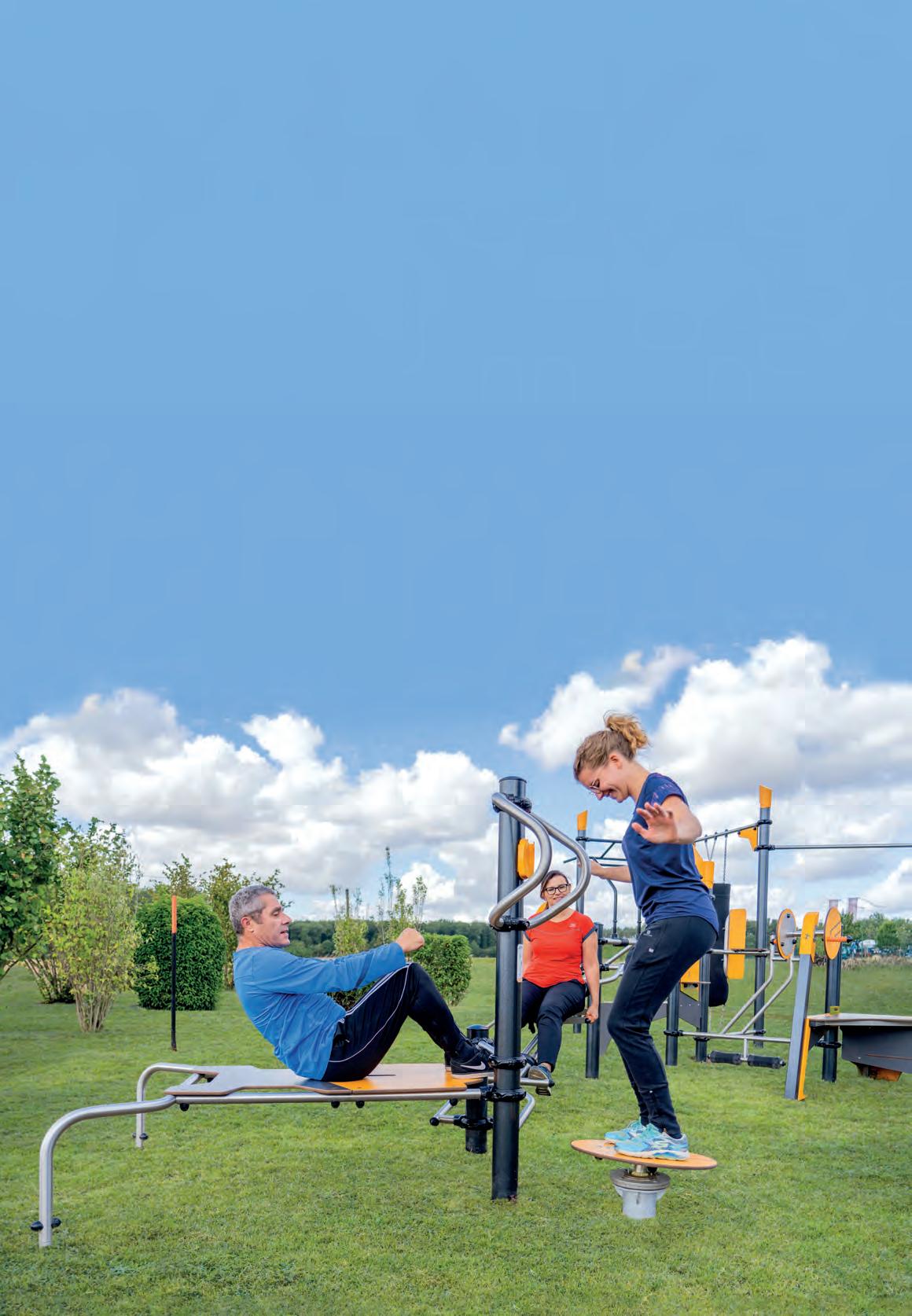
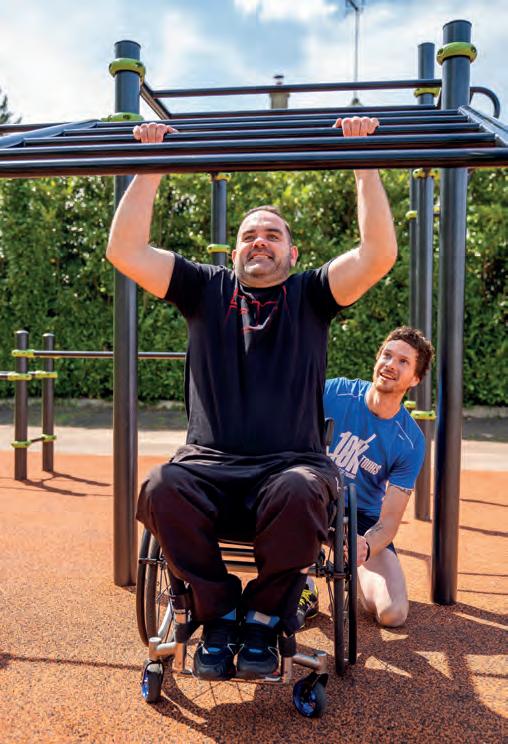
In the UK, we work across a broad spectrum of markets that include local authorities, schools, housing developers and the leisure and tourism sectors. Local authorities form one of our largest client bases, in which we design and deliver public play areas, community parks, outdoor gyms and multi-use games areas (MUGAs).
We’ve also built a strong reputation for delivering imaginative, safe and inclusive playgrounds in schools across the country, with a particular focus on special educational needs settings.
Alongside public sector clients, we collaborate extensively with national and regional house builders, providing play and recreation spaces within residential developments, as required under planning regulations.
Beyond these core sectors, our equipment (and expertise) is found in holiday parks, retail destinations, hospitality venues and tourist attractions such as zoos, museums and theme parks. In short, any environments where highquality, visually appealing bespoke play equipment helps create memorable visitor experiences.
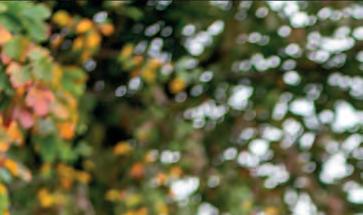
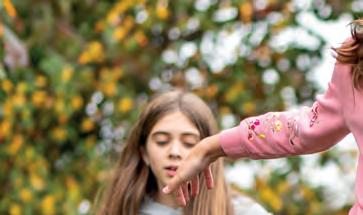




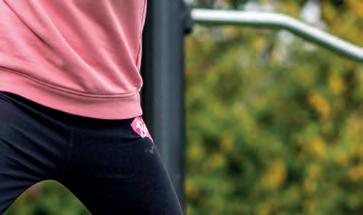
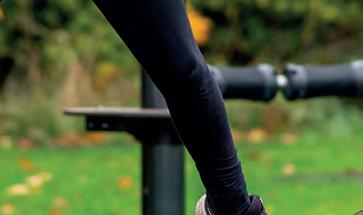

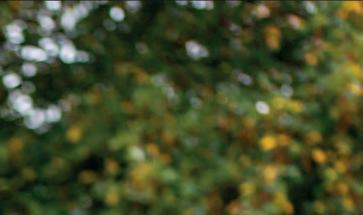





Innovation is at the heart of Proludic’s ongoing evolution. One of our most exciting developments recently was the ACTI’Fun range, a collection of outdoor sports and fitness equipment that bridges the gap between play and exercise.
Designed to make physical activity accessible and enjoyable for everyone, ACTI’Fun includes three sub-brands – ACTI’Fit, ACTI’Street and ACTI’Ninja – each catering to different levels of ability and motivation. The range incorporates smart technology through QR codes that link to digital exercise guides and tutorials, encouraging users to be active while learning and having fun. We’re also investing heavily in sustainable and nature-inspired design. Our natural wood ranges celebrate both organic and animal shapes, earthy
inclusion and creativity remain at the core of every new development
tones and environmentally responsible materials that allow children to play in and with nature. Sustainability, inclusion and creativity remain at the core of every new development. We continue to innovate in inclusive play design, developing new guidelines and tools that help clients create spaces accessible to all.
empathy, creativity and social purpose
Rob Baker highlights two recent projects that Proludic has completed in the UK.
“A recent highlight for us was the natural Robinia wood play area at Pennington Flash Nature Reserve in Wigan. The installation, which includes two tall towers interconnected with an aerial crawl way, transformed one of the region’s most popular country parks with a design that blends seamlessly into the natural landscape. The natural equipment, some of which is based on the wildlife in the reserve, encourages adventure, movement and social interaction, appealing to a wide range of ages while supporting environmental sustainability.
The project perfectly reflects Proludic’s philosophy of combining aesthetics, durability and inclusivity to create spaces that enrich both the natural landscape and community life.
Another project that embodies Proludic’s values is The Nook Children’s Hospice in Norwich. Designed specifically for children with diverse, physical and sensory needs, the bespoke playground provides a joyful, therapeutic and safe space for play and relaxation. Developed in close collaboration with hospice staff, therapists and families, the inclusive playground ensures accessibility and emotional comfort for every child. It is a space where children and families can share special moments and feel a sense of normality during difficult times.
Both projects capture what Proludic does best – merging technical excellence with empathy, creativity and social purpose.”

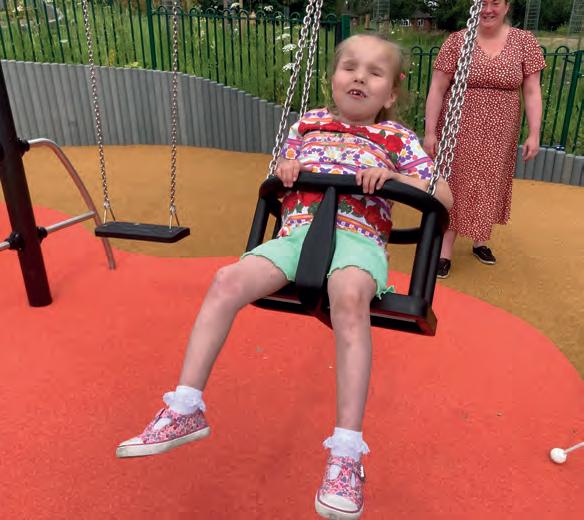
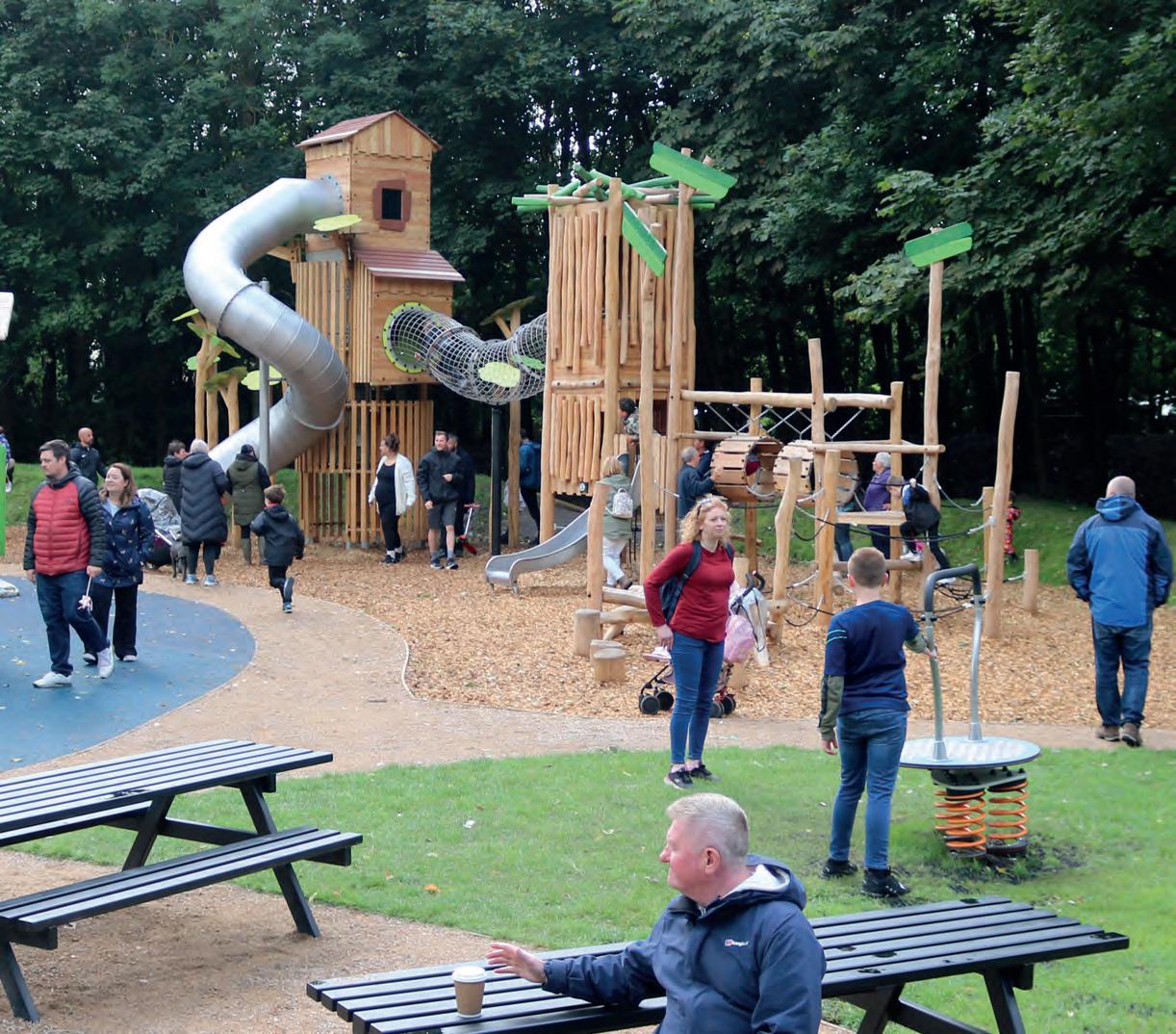
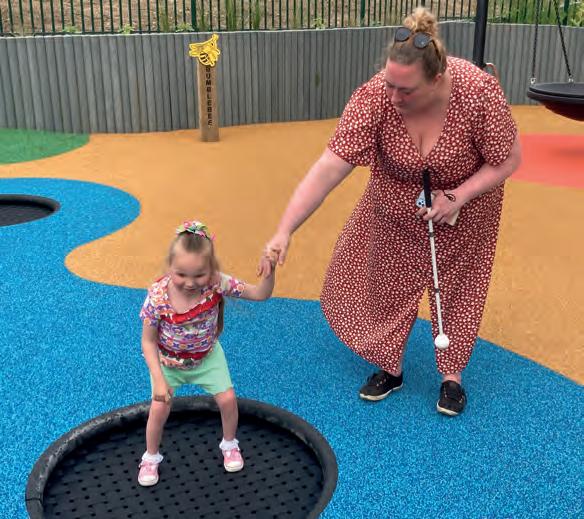

Activation kits from just £1,999 - Full MUGA options available for all budgets We Transform tired spaces into vibrant, inter generational community hubs.
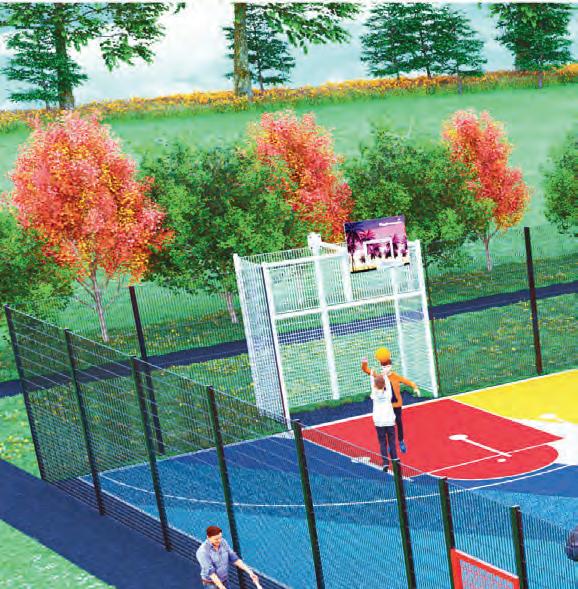




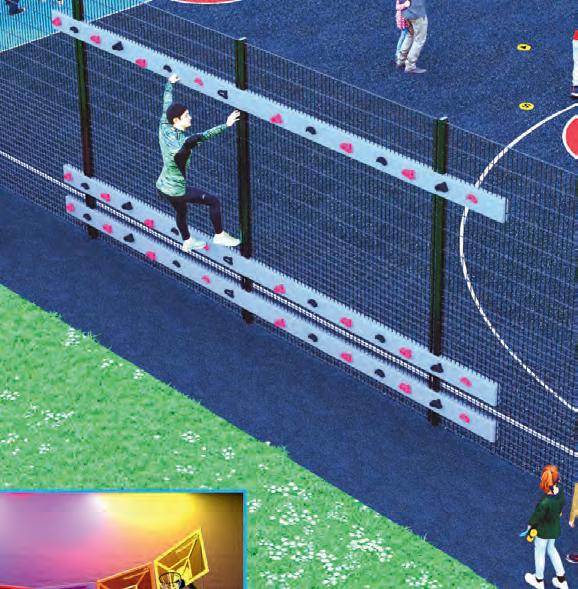


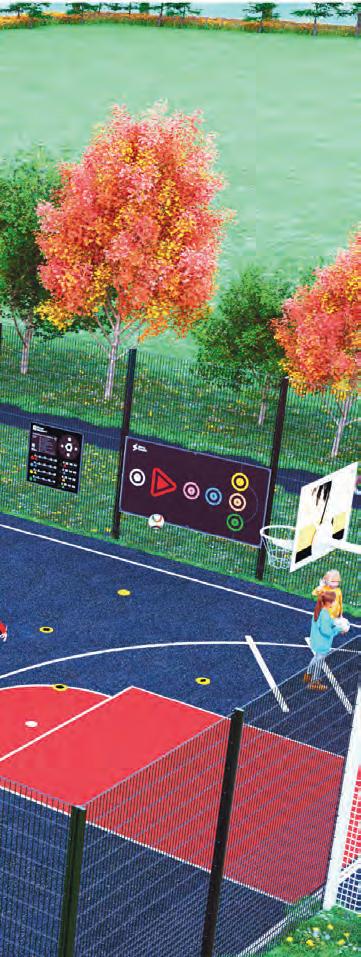


Patented games designed to tackle inactivity and mental health issues.
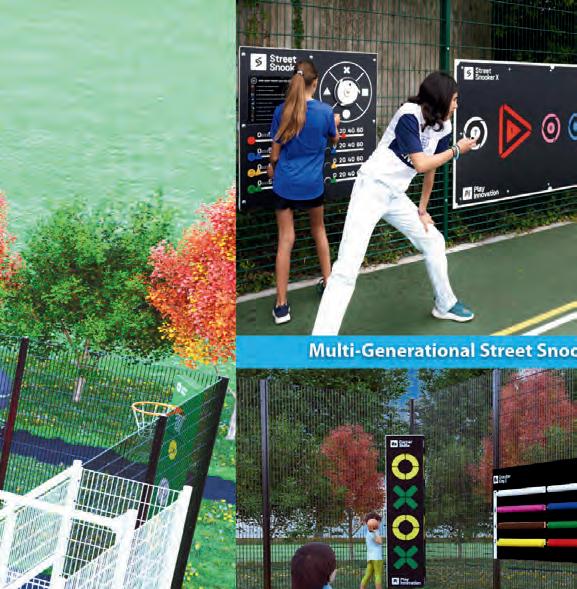
inter-generational, low maintenance games

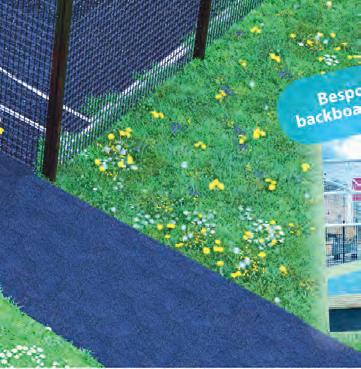



90–95%Inclusivedesignstandardsresultin useracceptanceacrossage&abilitygroups.
90–95%Inclusivedesignstandardsresultin useracceptanceacrossage&abilitygroups.
90–95%useracceptanceacross





Ask about the Corner Skills range today!


PlayNation looks at some of the recent play projects to have been completed across the UK
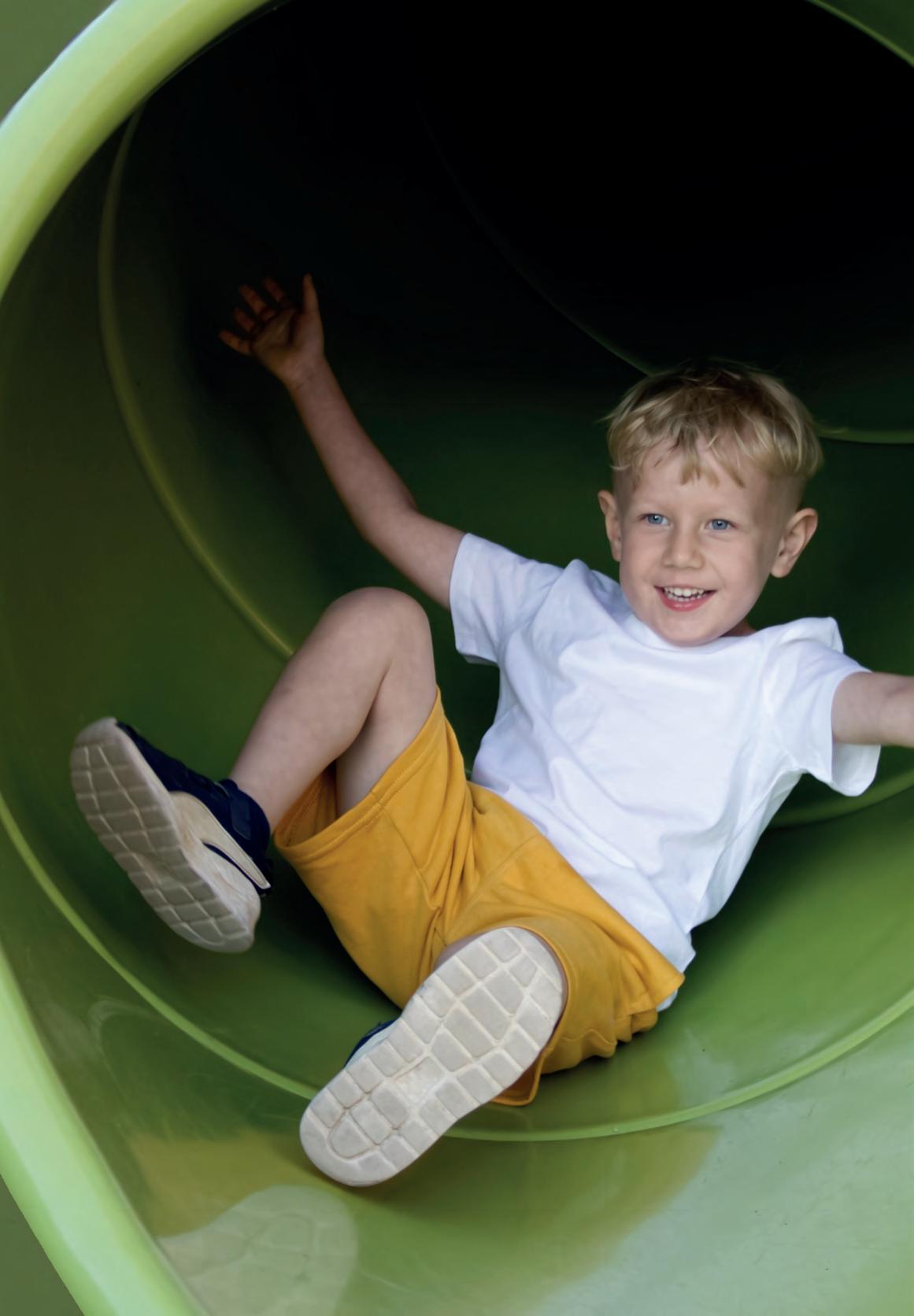
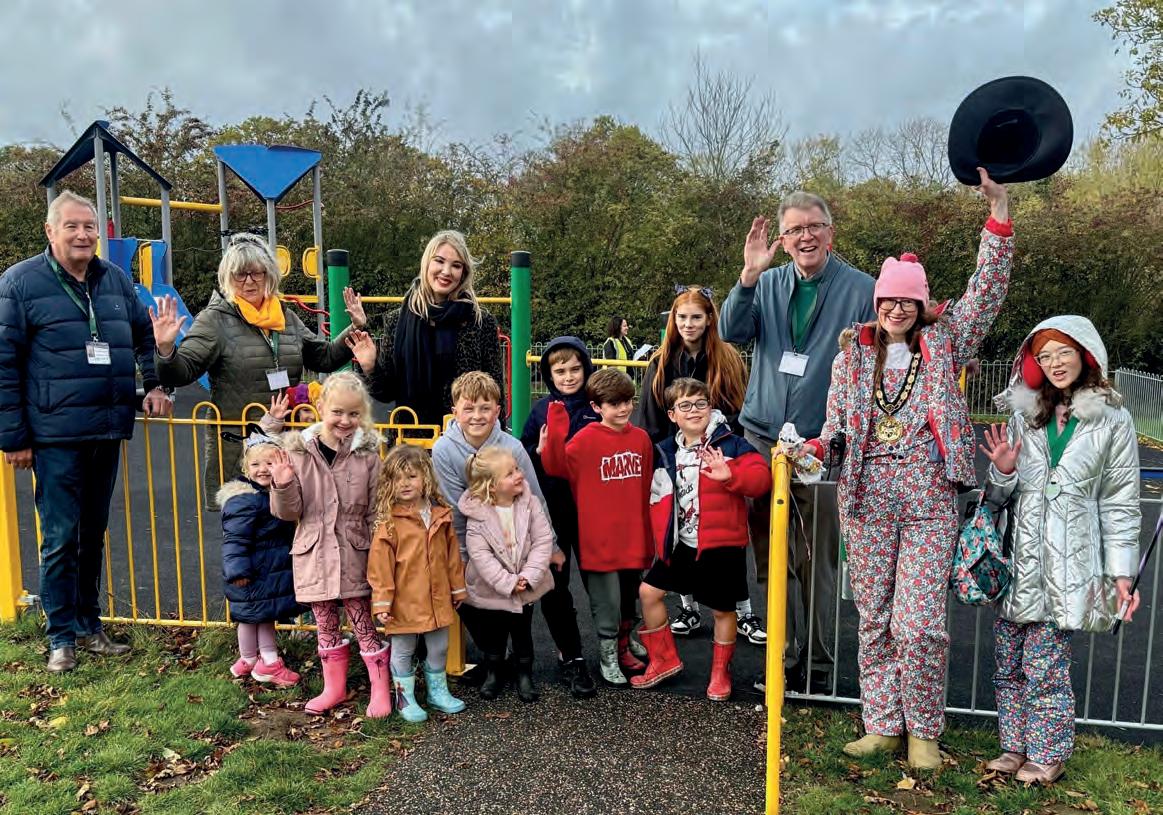

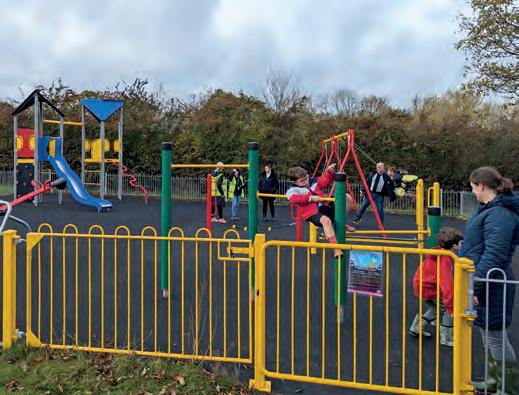
The Epping Forest District Council’s park team hosted a free Halloween play session to celebrate the grand opening of the Bumbles Green Play Area in Nazeing. Hosted alongside Nazeing Parish Council, the newly refurbished Bumbles Green Play Area was officially opened on Friday 31 October with a special Halloween Play in the Park session. The Halloween session saw children dress up and
enjoy the new equipment. The parish council also handed out goody bags on behalf of HAGS Global, the construction company that built the new playground. The refurbishment also includes an outdoor gym, helping residents stay fit while enjoying the park. Chair, Louise Mead, was in attendance, getting into the Halloween spirit in dressup, and welcoming children and parents.

Ustigate Waterplay is working with Fife Council to establish an inclusive splash pad and a bicycle and scooter course that will provide all year round play at The Links in Burntisland, Scotland. The project, which is partly funded by Fife Council, the Fife Environment Trust, the Scottish Government and a community fundraiser, comes after a successful petition by the local community.
Ustigate Waterplay was chosen to bring the project to life for all the teams involved, for a full 2026 water play season. The aquatic play design includes Ustigate’s Bamboo Stem that will
Two ageing ball courts in Westminster – at Churchill Gardens Estate and Church Street – are getting a new lease of life this autumn, thanks to an ambitious refurbishment project led by Play Innovation.
Work began in mid-August and the sites will soon showcase Play Innovation’s signature family-inclusive games, including Street Snooker X, Corner Skills, and the vibrant Funky Hype Multi Goals. The games have been designed to get children, young people, and families moving together in fun, creative ways. The upgrades also include the installation of a new playing surface, Matchplay 2 – a durable, synthetic sports surface by Playrite – new fencing, floodlighting and roof netting to ensure safe, year-round play.
provide sprays from above, a pretty Vine armed with two Seeflow tipping buckets and a low level Waterbug with Podspray for water amplification. Also included are Helio and Luna from Explora, a collection that engages children to move, push, pull, spin and splash, a misting Spray Loop and ground sprays galore! There is also an accessible activation bollard, enabling everyone to start the flow.
Councillor Linda Erskine, Fife Council spokesperson for Communities, said: “The new design reflects the community’s wish for a fun, inclusive space with maximum play value.”
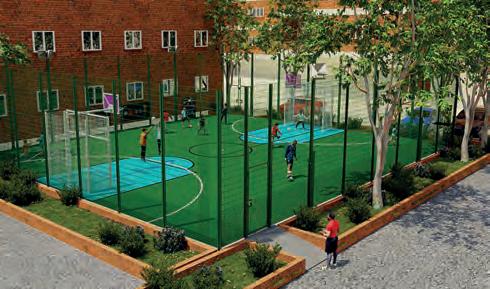
Marco Boi, founder of Play Innovation, said: “We have been working very closely with the team at Westminster and ensured taking a holistic approach to the entire project before even putting a spade in the ground.
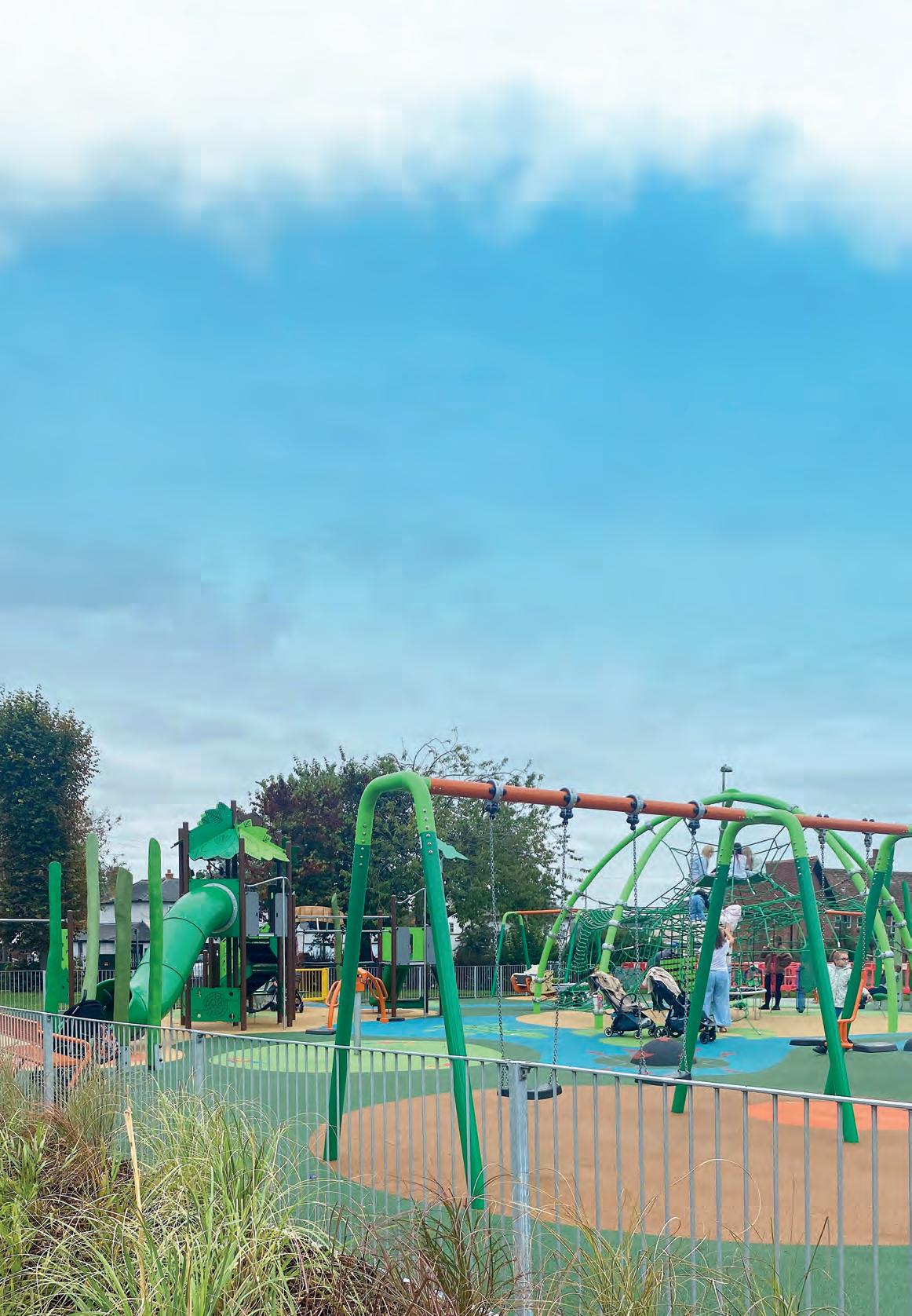
Play specialist, Kompan, has helped transform a once-underused space into a vibrant, wildlife inspired adventure playground that has become a community destination for families across Andover. The new play environment is more than just a collection of play equipment – it’s an immersive experience designed to engage children’s imagination, promote physical activity, and strengthen connections to the natural world.
The original play area was outdated, uninviting and had suffered from persistent antisocial behaviour. Feedback from the local community highlighted strong interest in a wildlife-themed play area, with vibrant colours, natural materials, and features catering to a wide age range. Importantly, children were also invited to draw their visions for a ‘dream park’, many of which inspired key design elements. From this process, Kompan were selected from six competing suppliers to bring the vision to life.
The new Wild Park play area features an animalthemed design, complete with thrilling slides, swings, wheelchair-accessible trampolines, role play zones, and a spectacular rope climbing dome. It’s been created with accessibility at its heart, ensuring children of all abilities can enjoy the space together.
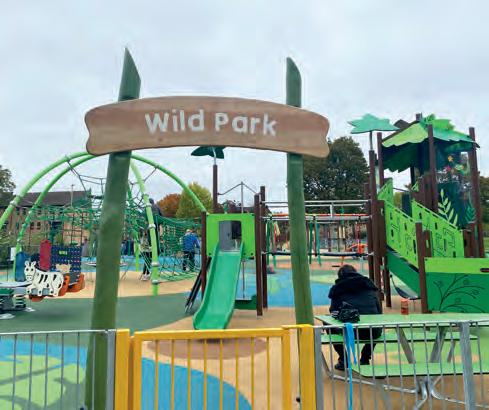
The project was led by Test Valley Borough Council. Leader of the Council, Councillor Phil North, said: “The new park looks amazing, and I’m really pleased that the designs were been shaped by our residents and user groups. We’re very sorry to residents about the delayed opening, unfortunately it was out of our control, but we’ve been working hard to get it open as soon as possible.
“Vigo Park is well loved and well used, but our residents told us they wanted an inviting play area for their children to enjoy – and I’m delighted that we have been able to deliver on that.”


Stirling’s Kings Park is a popular outdoor destination park which offers fantastic leisure and play opportunities for families with younger children. By early 2025, however, an upgrade to its play space was required and Sutcliffe Play collaborated with Stirling Council to make it happen.
The project differed from Sutcliffe’s usual installations, incorporating only a single massive tower system across the entire space. The company also considered the project’s environmental impact and retained the three existing slides, while
also ensuring the new unit was to be constructed from FSCcertified natural timber logs.
The towering multi-play system incorporates many differing features, levels and access points, bringing fun for children of all ages and abilities. Inside, visitors will find a scramble rope bridge, a timber bridge and a cluster bridge, as well as a centrepiece roofed tower. The unit’s layout also offers an incremental increase in difficulty from east to west.
James Aikman, Projects Officer for Stirling Council, said: “Sutcliffe Play worked collaboratively
Milton Keynes City Council has upgraded the play park at Coffee Hall, creating a fresh and inclusive space for children and families to enjoy. In partnership with Woughton Community Council, Milton Keynes City Council has installed an accessible roundabout, trampoline, see-saw, sensory huts, wide slides and sculptures all designed to be fully accessible.
The park, designed in consultation with parents and carers of children with disabilities, officially opened on 1 November and is fully fenced making it a safe space for children with extra needs to explore safety.
It’s one of many improvements the City Council is making to selected play areas. Last year, it set aside £250,000 to upgrade play parks that need extra attention, upgrading facilities to keep them safe and exciting spaces for children to enjoy. Over the
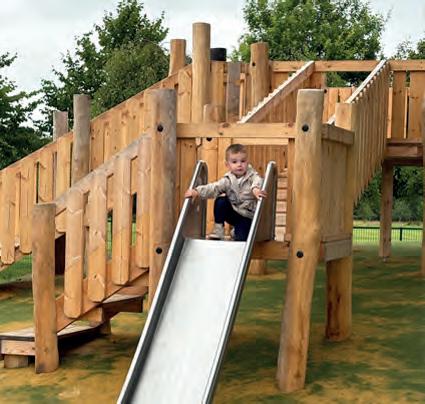
with the council to design and install a fantastic bespoke tower system. They were attentive to our needs at every stage, and we’re delighted that they’ve given Kings Park the fun and fresh new fort that it deserves.”

past year, the City Council has opened and refreshed several play areas, including the Whirly Pits in Olney and a King’s Coronation themed park in Crownhill. With 466 play areas across the city – equating to one for every 255 children – Milton Keynes has one of the highest levels of play provision in the country.


Skateparks and pump tracks have become vital parts of community play provision, o ering inclusive spaces that promote physical activity, creativity, and social interaction
Pump Tracks are spaces designed to generate momentum through a ‘pumping’ action through the body, rather than pedalling.
Designed and built correctly, they can be suitable for a wide variety of ages and skill levels, and offer users a full body workout – disguised as fun! Their versatility and lack of need for specialist bikes or equipment makes them a great community facility, allowing generations to play together.
Unlike traditional play areas, pump tracks cater to a wide range of ages and wheeled sports – from skateboards and scooters to BMX and balance bikes – creating facilities that grow with users and encourage long-term participation. When designed well, they can offer an open, creative and inclusive gateway into physical activity for children who may not feel at home in traditional sports settings.




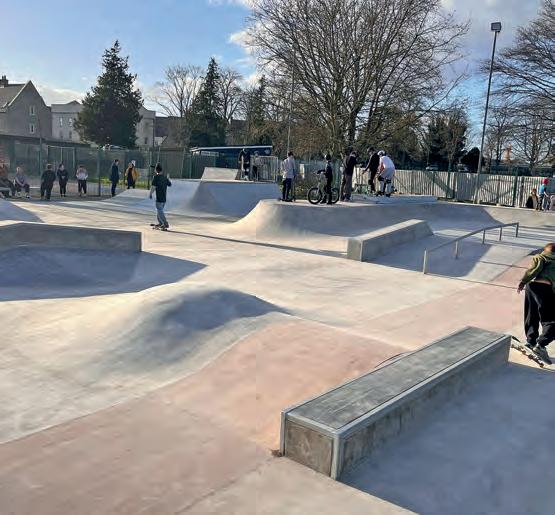



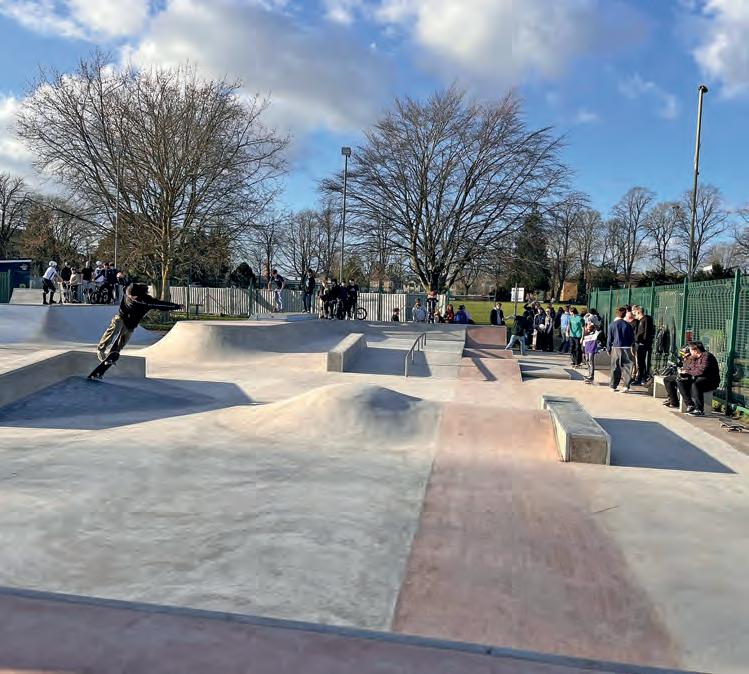
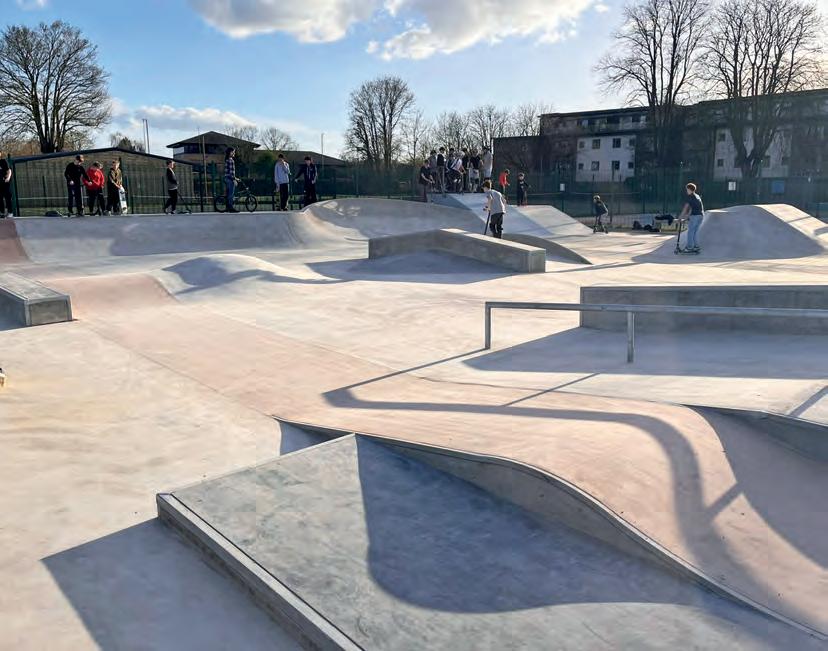
Unlike team games with fixed rules or competitive expectations, these spaces encourage freedom, experimentation, and self-expression. A child can turn up alone or with friends, set their own pace and develop skills through play rather than instruction.
For children who feel shy, lack confidence, or don’t see themselves as “sporty”, pump tracks and skate parks can remove the pressure to perform. They invite movement for movement’s sake – gliding, balancing and improving through repetition – while still offering the thrill of mastery


Through sensitive redesign, tired parks can be transformed into safe, engaging hubs for young people
and progress. The design of these spaces naturally promotes fitness, agility, and coordination, but in a way that feels more like play than exercise.
Equally important is the social environment they foster. Riders and skaters of all ages and abilities share the same space, often encouraging one another and celebrating small wins. This sense of belonging can be transformative, especially for children who struggle to find their place in organised sport. Pump tracks can make movement joyful, accessible and endlessly adaptable – a vital route to lifelong physical confidence.
The recently refurbished Witney Skatepark in Oxfordshire, originally built in the early 2000s, had become tired and less appealing to local riders. Through a sensitive redesign, the park was transformed into a modern, flowing concrete facility that accommodates beginners while still challenging more advanced users. The refurbishment not only extended the lifespan of the site but also reinvigorated its role as a safe and engaging hub for young people.
By contrast, Raunds Skatepark in Northamptonshire demonstrates the impact of starting fresh. This new build combined a contemporary skatepark with an adjacent pump track, providing complementary spaces that attract a wide variety of users. The pump track in particular has proven popular with families, offering a safe introduction to cycling and wheeled sports for all ages. Together, the two facilities have created a vibrant destination that supports progression, inclusivity, and active play.
Projects like these, designed and delivered by Bendcrete Skateparks, highlight how skateparks and pump tracks can strengthen communities. They provide more than just recreational spaces – they are long-term assets that encourage healthier lifestyles, develop skills, and foster a sense of belonging.

The Belshill project includes a pumptrack, a pump park and a jump line
Bellshill Gateway cycle facilities, North Lanarkshire
Pump track and bike park specialist, Velosolutions, has completed a pump track project at Bellshill gateway in Strathclyde Country Park. Facilities now include a pump track, trials bike area and mountain bike skills loops and trails, as well as a natural play area and small woodland.
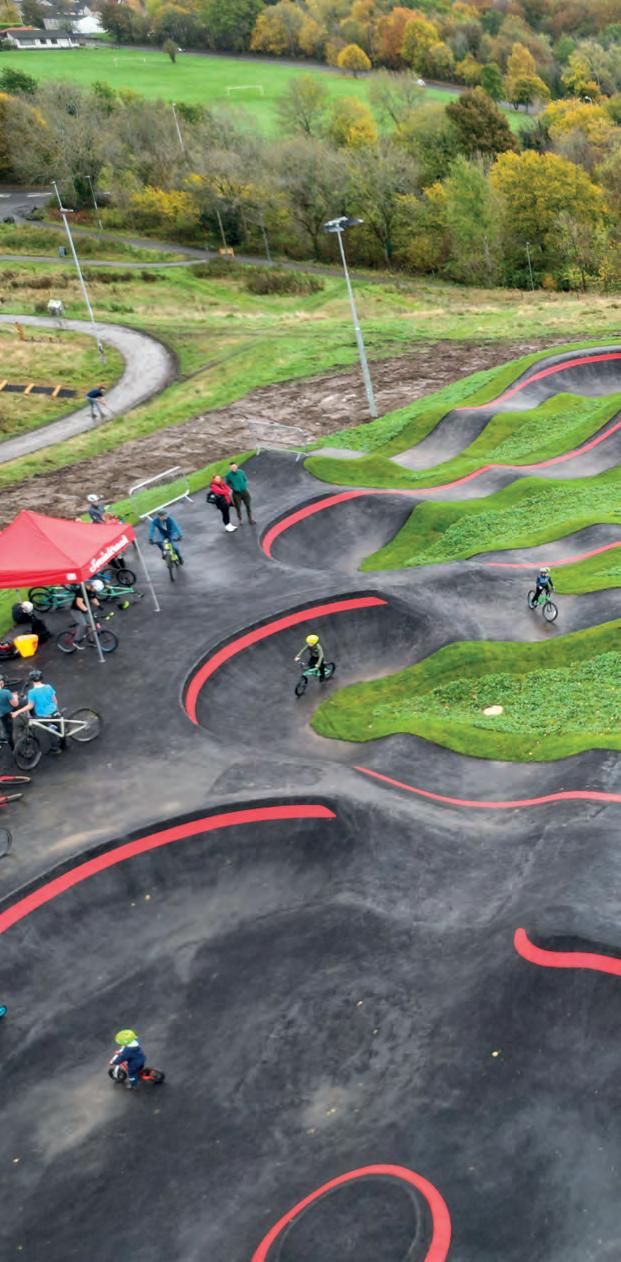
Velosolutions delivered a 200m pump track, 350sq m pump park and a 65m jump line at the site, as well as a mountain bike skills area, trials area, and a “Red Mountain Bike Trail”. The pump track, park and jump line are finished in Velosolutions’ specially developed, custom asphalt mix, which is shaped and finished to be smooth enough for use by bikes, skateboards, roller blades and scooters.
This custom asphalt has low rolling resistance, yet provides enough traction to be used in wet weather. Combined with floodlighting, the park and other areas can be used year-round.
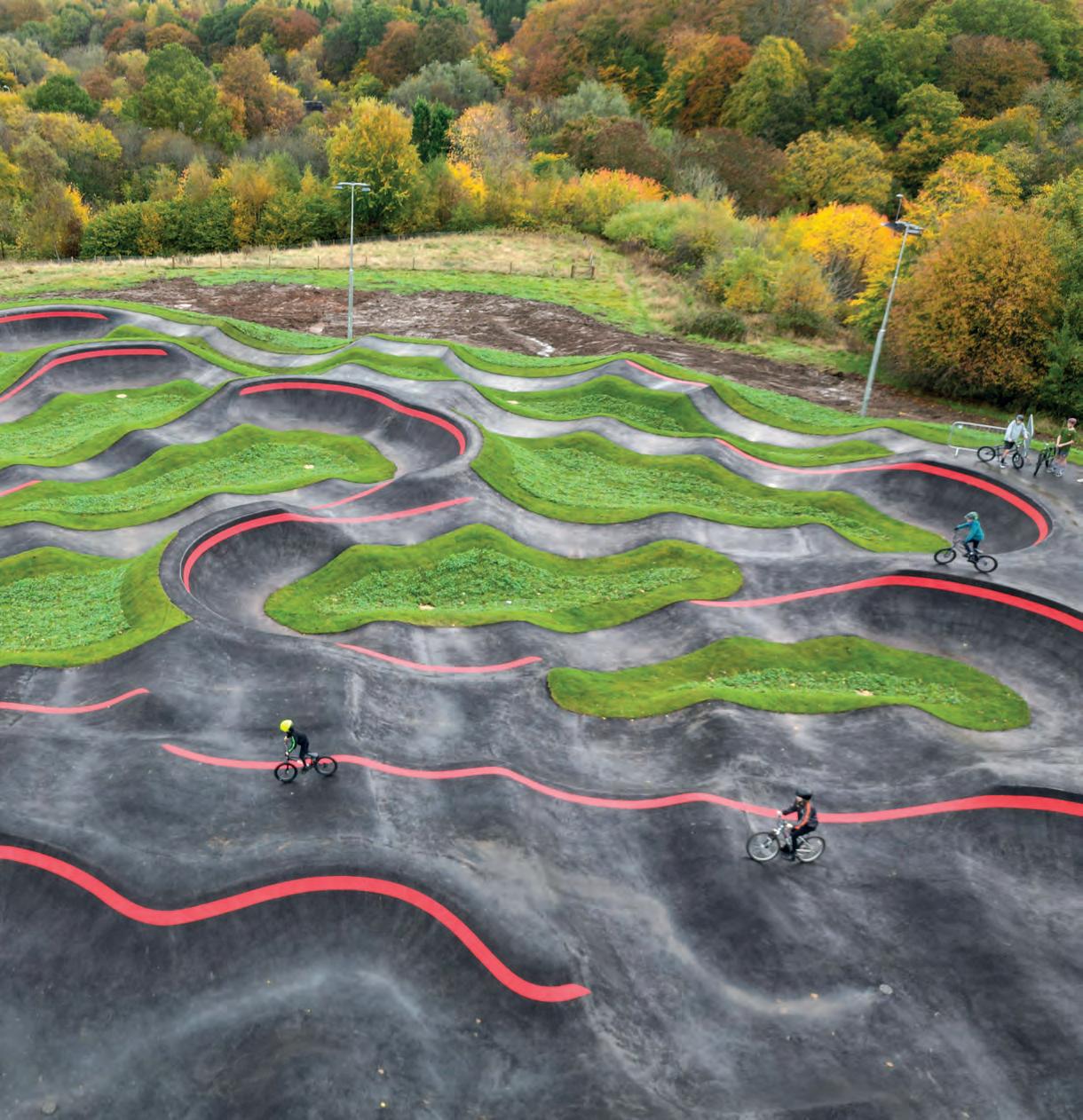
A spokesperson for Velosolutions said: “Careful attention to drainage design and track gradients further ensure that water doesn’t pool on the track, keeping it open whatever the weather.
“The pump track allows riders to progress around the track, while the jump line allows more advanced riders to work on jumps and tricks. Elsewhere, the pump park offers a connected ride space that doubles as a lower level track for beginners, or a freestyle space for skateboards and advanced riders.”
Velosolutions has also developed an additional ‘all-ability’ track type, which provides gradients and turning radii suitable for wheelchairs and adaptive bikes.
Faced with the challenge of delivering safe, inclusive, and cost-effective recreational infrastructure, Liss Parish Council engaged Dirt Factory to trial a portable pump track, a temporary, modular facility offering flexibility and community insight ahead of investment. The trial attracted widespread participation across age groups and modes of mobility, from bikes and scooters to roller skates. Feedback was overwhelmingly positive, collected via both online surveys and in-person channels. As one councillor noted, the track is set to become a hub for exercise, skill development and social connection.

Following the trial, the council selected Parkitect Modular Pumptracks for the permanent installation. These prefabricated systems are designed for rapid installation, low long-term maintenance, and future adaptability, ideal for councils operating within tight budgets and evolving space-use needs.


Parkitect tracks meet stringent TUV safety and insurance standards,offering peace of mind for councils, while their inclusive design supports users across abilities, helping foster a sense of ownership and active collaboration within the community.
The project offers a compelling blueprint for other UK local authorities: start with a low-risk trial, engage the community authentically, and invest in adaptable, certified infrastructure that maximises impact while ensuring both financial efficiency and long-term adaptability. More than just a track, the facility has proved an asset that promotes wellbeing, inclusivity and future-ready planning.


Dirt Factory is the official UK supplier and installer of Parkitect Modular Pumptracks, with experience delivering both temporary and permanent installations.






